The End and the Beginning of Human Planet
by Dale Templar, Series Producer
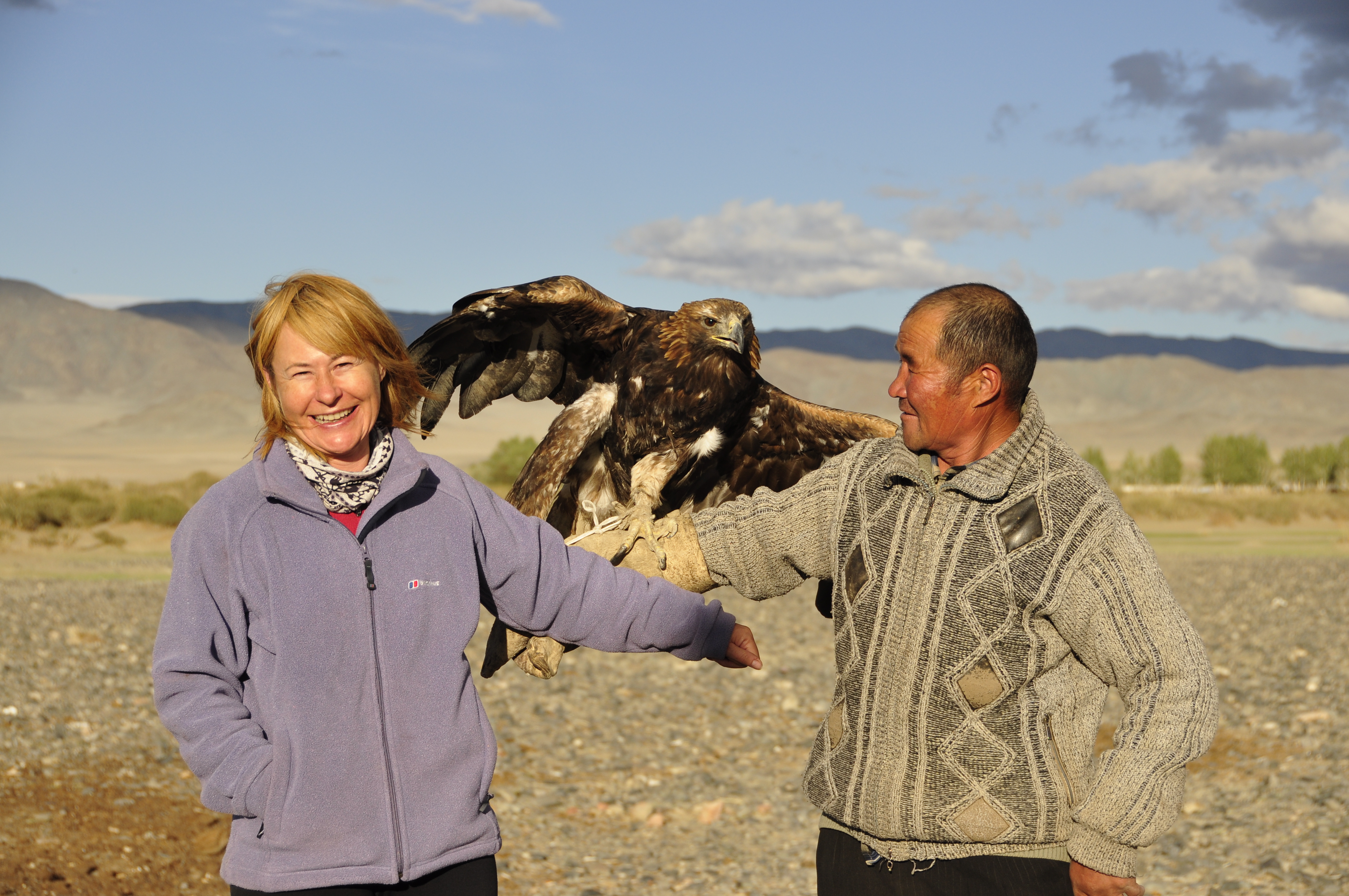
Dale pictured in Mongolia on a shoot to film the Eagle Hunters sequence from the Mountains programme.
Last Thursday saw the final episode of Human Planet transmit in the UK. I had mixed feelings as I watched the end credits roll for the last time. After three intense years, sending teams to over 70 locations including some of the remotest places on earth, this really did mark the end of the formal production process on the series. It is always sad when a production ends. Virtually all of my amazingly talent team have gone - many already on new adventures around the world. There is literally just a handful of us left in the Bristol and Cardiff offices.
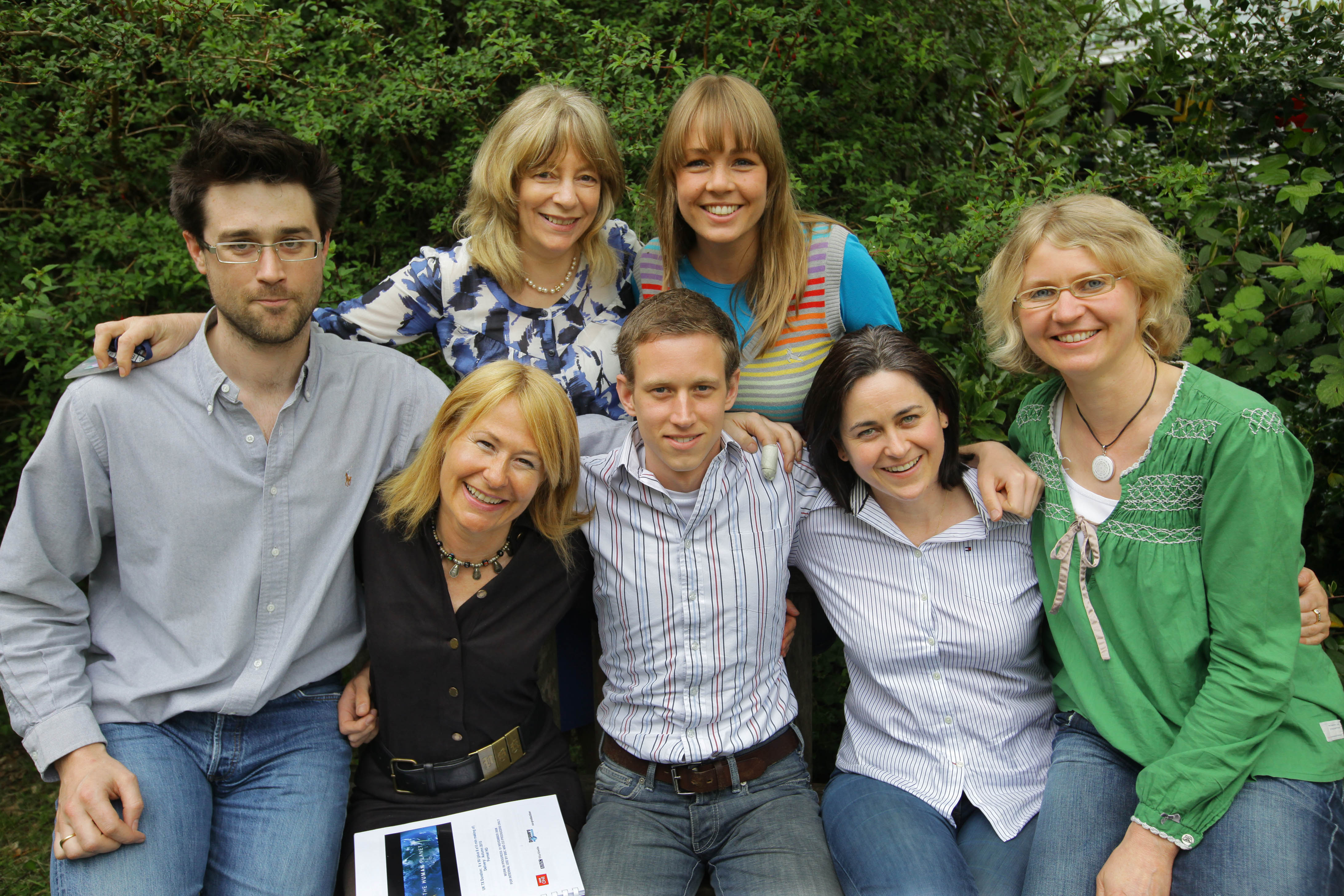
Dale with some of the Human Planet team. From left - right (front) Edit Assistant Craig Haywood, (Dale), Technical Co-ordinator Jasper Montana, Production Co-ordinator Isabelle Corr, Production Manager Alison Brown-Humes. (Back) Production Management Assistant Julia Wellard, Production Co-ordinator Jo Manley (Photo copyright Timothy Allen 2010)
But Human Planet has been different from any other programme I have ever worked on. Normally the last UK transmission would be the end of the series. For Human Planet it feels like a new beginning. For a start I am still in slight shock at the amazingly intense and positive reaction we have had to the series from people of all age groups. The series has been praised by members of the Royal Geographical Society, it’s been the focus of talk and gossip around office water coolers and it’s been making news particuarly online. I’m especially pleased that the series has connected with a younger audience - there’s been a buzz on Twitter and Facebook and millions of hits on You Tube. One young mum told me her 3 year old son was a huge fan of Human Planet, watching every episode without fail! No programme maker can ever be sure of a hit. This is a very fickle industry and audiences can never be guaranteed even when you’ve made a landmark series for the BBC. The feeling is that Human Planet is a fresh and different type of landmark. Many people, even those who don’t normally enjoy natural history have become hooked on humans!
Personally I hope this new found passion for humanity will continue. The series is a spectacular snapshot of the diverse human world we live in. But the world is changing fast, very fast. It’s becoming increasingly hermogenised. Even now one City looks much like the next - same Starbucks , same McDonald’s. Human Planet filmed with people who still directly depend on the natural world for their survival but their wisdom and customs may soon be disappear. The human species cannot be set in aspic but I think many of the stories we filmed will be gone within the next 10 years.
So what next? The series is now out on DVD/Blu-Ray and the book is in the shops. Next month it jumps across the Atlantic to be shown on Discovery Channel (a different version from the one showing in the UK) Then the UK version will start being shown on television around the world. So look out for Human Planet in your neck of the woods! Hopefully the BBC will commission a second series, watch this space…
So hopefully the end is truly just the beginning…I can only hope that this series sparks an interest in the challenges facing our human planet and that more is done to protect the incredible diversity, languages and cultures of our magnificent species.
Long live the Human Planet and all that sail on her!
Living with Lions
by Jane Atkins, Human Planet Researcher
‘You see, Lions and the Dorobo, we feed each other.’
‘If we hunt a large animal, we take away as much as we can, but leave the rest for the lions to feed on. And sometimes the lions kill a really fat animal and we say, lets take this one. It is not simple, you have to track carefully and quietly. You are scared.. thinking - will I be mauled?’
‘But when you are hungry and know lions have killed first - you take your chance. There are days when we eat only what the lion has killed. We live on those lion kills until we finally make our own kills.
When we filmed 3 Dorobo hunters stride up to 15 lions to steal from their fresh kill our hearts were in our mouths. Courageous? Ingenious? Suicidal? All of these perhaps, but this one act is undeniably impressive. The Dorobo say they are hunters just like lions. They watch lions, and how they hunt. Just as lions do, the Dorobo watch every animal on the great plains - and study each individual. Like lions they observe which ones are wounded, slower, easier to pick off. They wait and wait until the time is right to hunt. And if the lion gets there first, well the Dorobo turn that into another opportunity.

There are three lion prides living in the same area as the Dorobo. This 22 strong pride are just a few hundred metres from the Dorobo's regular camp.
But these opportunities are fading, and fast. These hunting and scavenging practices may be age old, but in 21st Century Kenya, they are banned under the country’s blanket law that no hunting is allowed in Kenya. Although the law was made primarily for big game hunters, it has been enforced at the local level, with traditional tribes, to avoid any ‘grey’ areas.
And so these Dorobo men are living a daily struggle of holding onto a lifestyle passed down through the generations; being free to walk through the great plains, hunt game to feed themselves and their family and sleep under the stars in caves and hidden valleys. Now, they all accept that although they were brought up to be hunters, they will not be bringing up their children to be hunters, to know the wildlife as intimately as they do.
Olkinyei is one of the last pockets in Kenya where the Dorobo still live, but in the last year, the area has been identified as a new conservancy, which means a step up in wildlife conservation in the area. This will ultimately push out of the Dorobo hunters.
And so in our lifetime, we will see an end to this ancient lifestyle of hunting, gathering and scavenging. An accumulative knowledge that has been passed down over 1000s of years.
In a time when stories about endangered wildlife regularly hit the headlines, few people seem to notice that incredible human cultures are being lost; ‘like swatting a mosquito - no-one seems to notice’. The irony here is that wildlife conservation has played a strong part in the Dorobo’s fate.
Whether you think this is right or wrong, it seems the fate for the Dorobo is inevitable. However, it may still be possible to keep their extraordinary tracking skills alive.
Today Jackson Looseyia, who runs a safari lodge in the Masaai Mara, has started employing Dorobo men to be spotters and trackers for his tourists. Jackson says, ‘If the Dorobo way of life disappears, so too does their knowledge. The Dorobo can spot and name any distant bird or animal, identify any nearby track or noise, and tell the story of hunt through reading the tracks in the sand.’
So perhaps this is one way for Rakita and his friends to keep their knowledge alive, even if their traditions die. It may not be as heart racing as hunting a buffalo, listening to the sounds of the night, or stealing food from a lion, but perhaps it’s enough? Rakita told me as we left ‘Of course I am sad to say goodbye to the life of my father, my grandfather… but what can I do? I cannot continue this life much more… I have already been in prison before now! And to bring up my son as a hunter here would be irresponsible. I don’t want him to go to prison. It is a shame, but what can I do?’.
If Human Planet achieves anything, a respectful salute to some of the people we filmed with would be a great thing. For the team back in the UK, finding some of these unique stories was hard, and filming them was challenging. But in a few years to come, these stories may turn out to be the last record of not just the Dorobo but many of the other people and cultures we were so privileged to film.
Watch the Dorobo steal from the lions here: http://www.youtube.com/watch?v=pNeNTMmltyc
15 Minutes of Fame Across the World
by Karina Moreton, Mongolian Fixer, Human Planet
The Human Planet series is made up of over 70 individal stories, each several minutes in length. As many of you will have gathered from the “Behind the Lens” snippets at the end of each episode, filming these sequences is never easy. Not only were there the challenges of the film crew – such as how to deal with ice melting; cliff edges and tides turning, there are the stories of the people portrayed. For some of them, the whirlwind of a film crew living with them was years ago now and they have gone about their daily lives since. Now that the series is out, will anything change for them?
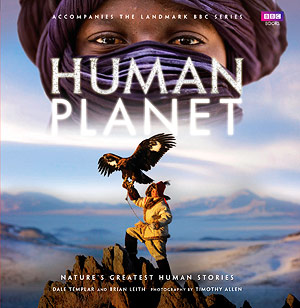
Berik from Human Planet's Mountains programme features on the book's cover
Berik from the Mountains programme is 16 years old. This is him and his eagle on the front of the book that accompanies the series. The book and programmes will be distributed worldwide and it’s hoped they will reach a huge audience. This is more than 15 minutes of fame! Around the world there is a culture of stardom – what would the teenagers from ‘Fame Academy’ and other talent shows give for this exposure? Some could worry that it might go to his head.
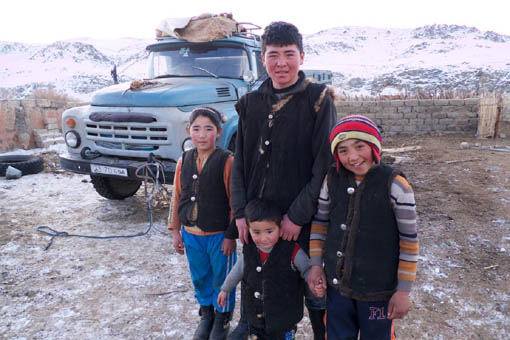
Berik with his cousins at his family home in Altansogts (image copyright Dina Mufti)
I’d like to show a photo or a clip of Berik looking at the book or DVD and giving his reactions. This however isn’t possible. Although copies of the book are on the way to Berik, they will take another 40 days to reach him. ’Outer’ Mongolia is considered to be the back of beyond, and Berik lives in one of the most remote parts of the country. I don’t anticipate that Berik will be exposed to his ‘fame’ until the next Eagle Festival.
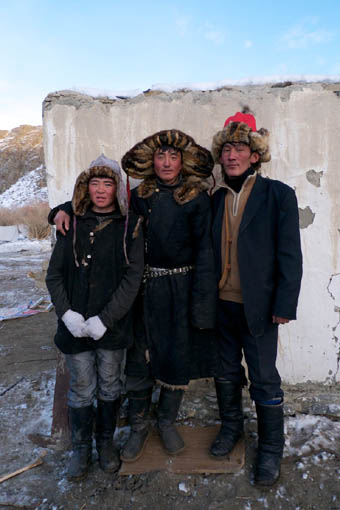
Berik with his older eagle hunting friends … before his first big hunt. (Image copyright Dina Mufti)
I think initially it will be the pages they feature in that will be the most thumbed through, though, with time, the other pages will be the ones that hold their attention. Over the last ten years of travelling through Mongolia, I have shown the reindeer herders of the north photographs of the camel herders in the south and I have shown young children photos of wolves and argali, animals that they have only dreamt of. Suddenly through this book, the Kazakh Eagle hunters of Mongolia are connected with not only the horse and camel breeders of central and southern Mongolia, but now they have shared an experience with the narwhal hunters of Greenland, mussel hunters of Canada and the honey gatherers of Nepal.
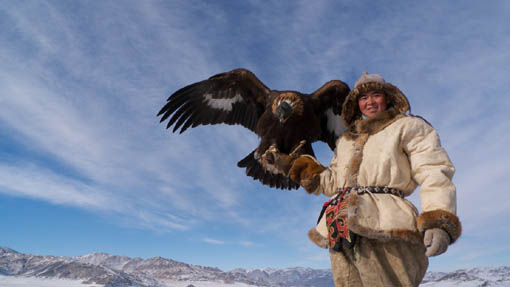
Berik, shortly after he catches his first fox …now officially a 'Kazakh man' (Image copyright Dina Mufti)
Mongolia is a landlocked country, so the images of the sea gypsies in the Pacific will no doubt enthral them. The bird of paradise hunter with his colourful headdress and nose piercing will amuse them. The naked Suri fighters will bemuse them. It is however I believe the story of the falconer in Dubai that will fascinate them. So much in common – for he also trains birds of prey to hunt, and yet they are in such a totally different world. Coming from a country with a rural population density of 0.9 people per square kilometre, it is almost inconceivable for a Mongolian to comprehend what it would be like to live in Dubai where there are 408 people per square kilometre.
Rural urban migration is a problem in Mongolia. Teenagers are attracted to the bright lights of the city. Berik might still be pulled away from his traditional way of life, but I think that perhaps the series will have changed the prospects for him and other young eagle hunters. By hosting occasional visitors who want to experience their culture first hand, this and other communities like them, have a renewed pride in what they do and a much-needed supplementary source of income.
After the characters in the Human Planet series have had their 15 minutes of fame, the book and the DVD will live on and spread their stories around the world. Many of the traditions and practises shown in the series may not survive until eternity.
Perhaps though, unknowingly, by exposing some of the characters to ‘others’ they may have slowed down the demise of man’s diversity?
Too Good to be True
By Karina Moreton
Mongolia has mountains, grasslands and desert, so it was a perfect location for filming some fascinating stories for Human Planet. When I was asked to be the teams’ fixer in Mongolia, I had a ‘pinch me’ moment – here was an opportunity for me to show off the country that I love so much , to producers at the BBC’s Natural History Unit! Armed with maps, photos and anecdotes, we discussed a wide range of potential stories and we settled on a few. Based in the UK , my role is to set up recces and shoots for film shoots. However, I am always trying to dream up ways to get on location myself rather than to be just co-ordinating from the office. The winter Gobi shoot for the Deserts programme promised to be a tricky one, so I wangled my way onto it.
In the weeks up to our arrival, my colleague Esee travelled to the remote South Gobi talking to camel herders about wolves. It was a big ask. We wanted to find a family who were affected by wolves killing their livestock; who had pregnant camels due to give birth during our time there; who lived near the snow line – who looked good on camera… and who were happy for a team of us live with them and film them for a few weeks!
Somehow the amazing Esee found the right candidates - camel herder Ganbold and his family. Once the teams started filming, I had a whole host of questions thrown at me ‘how do we film if the wolf attacks at night without freezing to death?”. One moment we would be discussing the likelihood of a snowstorm in the Gobi desert in the first few weeks of February; the next dealing with the fact that the only town in the South Gobi has run out of firewood.
I am sure the viewers will connect with these warm-hearted people and learn from their daily challenges. It is the moments that weren’t captured on camera that will remain with me – the time when 6 year old Otgonbayar and I shared the very intimate moment of a lamb being born; the serene solitude of his elder sister riding off into the empty desert with their flock; and the giggles shared with the girls in the ger.
Mongolia and her people have captured my heart. I am so happy that audiences around the world will be able to have an insight into the culture and landscapes of this incredible country. Over the years, I have gained so much from the Mongolian nomads I have spent time with. Panoramic Journeys, who I work for, always give back to the families and communities they work with. Ganbold and his family now supplement their income by hosting guests who would like to experience their lifestyle first hand.
Little Otgonbayar was keen to know when the photographs and footage that we’d shot would be seen by them all . I was four months pregnant at the time, and so it was handy to be able to say that the Human Planet book featuring the photos of stills photographer Tim Allen wouldn’t be published until my baby was running. I continue to pinch myself, for although my work for HP has come to an end, Ganbold and his family remain friends. My son is nearly walking now – but I will be returning to the Gobi with The Human Planet book and the series on my laptop very soon.
THE BBC COMES TO THE ‘OUTBACK’
by Phil O’Brien, Fixer
My name is Phil O’Brien and I live in a place called the Northern Territory of Australia. It’s a place you can wind your clock back a few years, have a beer, and live in peace. Spectacular, panoramic and wild, it’s a huge area, and there’s way more cattle live there than people.
I suppose I’ve lived a bit of a gypsy life drifting from job to job, and had my share of adventure and also a little misadventure in this great place. Everything from catching crocodiles to trying my hand at being a drink waiter… and everything in-between. But not so long ago, I got roped into one of the most exciting rewarding experiences of my life, and I’ll never forget the day the BBC film crew came to the ‘Outback’.
The phone rang with a sharp electrified burst, directly over my left ear, was way too early for a bloke that had been drinking beer after beer, some short hours before. Somehow I got the phone to my ear and answered.
The BB who? BB what…eh, excuse me?
Well, the sweet melodic voice of charming BBC Researcher Jane Atkins never missed a beat. ‘We need a ‘Fixer’ she politely announced. Now me being still half cut and not understanding film terminology, did what any respectable citizen of the Northern Territory would have done…hung up and went back to sleep.
During the next few days Jane Atkins followed up with more calls and information, dedicated and relentless in her pursuit of organising the film shoot, which had to be in the heart of Northern Territory cattle country. I tried to explain that Territory cattle country can be hard, merciless and unforgiving …and that was on a good day! But Jane Atkins stuck to her guns, and wanted me to help organise something that was going to be bigger than Ben Hur. What an honour! This wasn’t going to be no ordinary Mickey Mouse documentary, the BBC wanted to get right down in the bulldust and cow dung and film a rip roaring helicopter cattle muster in one of the world’s last frontiers.
It was a big ask, but Jane Atkins had come to the right man.
I knew just about every bloke, every horse, and every anthill in the Northern Territory. I knew that when it comes to cattle, one man had risen to the top and in a tough environment that breeds tough men, that’s no mean feat.
Big bustling ‘Ben Tapp’ was no ordinary legend.
Built like a brick toilet block, Ben Tapp liked to sprinkle horse shoe nails on his muesli…. he knew no fear. Ben Tapp was one hundred percent pure Territory cattleman, and when I told Jane he also flies a helicopter like a man possessed, the stage was set. Ben Tapp took no convincing, he always knew he was a larger than life character and it was only a matter of time before he hit the big screen.
The day finally came and the BBC film crew landed at our humble airport in the Territory capital of Darwin. What a fantastic bunch of people, I thought to myself as the introductions flowed and the pommy accents filled the air. They were a star studded line up, the best in their field. Jane Atkins was even better looking in real life than I imagined and the cameraman was a friendly bloke called Toby Strong. Accompanying them was the director, charming Susan McMillan, and technical assistant and roustabout, Jasper Montana. Sound man Ian Grant who flew in from Queensland. After a flurry of baggage, camera and sound kit, hire cars and groceries, we headed off on our 600 kilometre journey down to Maryfield Cattle Station, home of the legendary Ben Tapp.
Right from the start I really liked their humility; there was no big egos, no pretence, just a great film crew chomping at the bit. Keen to roll it, wrap it, and get it in the can.
We broke our journey after about 300 kilometres at Katherine, just in time to witness a fairly lively punch up between a couple of locals at the petrol station. The BBC film crew weren’t too fussed, they’d been all over the world, and two bantam weights swinging like rusty gates weren’t about to freak them out. Next stop down the track a bit was the one horse town of Mataranka, population 200 [including cattle].
The BBC was starting to get hungry so I steered them over to the Pub. Inside there were people propped up drinking furiously. It was like ‘God’ had personally just rung the pub and told them the world’s ending in half an hour, so get into it. In amongst it all was the publican, a glamorous lady called Deb, wandering around in a beautiful flowing gown, quite a sight in amongst all the rough necks. I introduced her to the BBC film crew. If she’d had a red carpet she would have rolled it out but instead she cooked a great feed of Barramundi and chips for everyone, she was a great host.
With Barra and chips hanging off our ribs we made the last few hours to Maryfield Station and finally everyone had a chance to meet Ben Tapp. It was all very warm, and although Ben is tough, hard, wild and all the rest of it, he is also a very generous bloke, and he totally opened up his house and his property to the BBC film crew, and nothing was going to be too much trouble. Ben’s hospitality really was first class. He was right on the ball, he had 2000 head of cattle to muster and he had his young team of stockmen fully briefed. His right hand man on Maryfield was a bloke called Rankin Garland who also was a gifted chopper pilot. Right from the start everyone really hit it off.
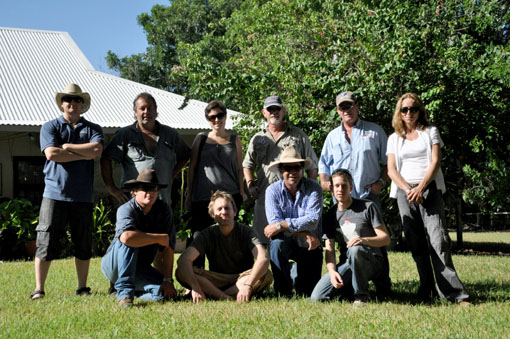
Back Row(from left) Warick Field[Cineflex Camera Operater
The next ten days for me were just unreal, I got to see a world class film crew in action and I was totally inspired. Camera man Toby Strong went from sun up to sundown and still had energy, I remember one time he was hiding in a bush filming cattle as they filed passed, a snake came out of nowhere and slithered over his leg, but he never flinched, he just kept filming. There was no stopping him, where ever the action was, there was Toby.
Susan McMillan was a great director and she brought the best out in everyone, she and Toby made a great creative team. I felt sorry for her a bit because I was doing the cooking for everyone and so all my meals revolved around meat, meat, and more meat, poor old Susan was vegetarian and I can’t actually remember her eating anything the whole ten days. She would have paid big money for a lettuce.
Susan, Toby and Ben communicated really well and as the whole focus was on helicopters and mustering, Ben and Rankin didn’t disappoint. Their aerial work was breathtaking, and Ben really got into the whole film thing. He was actually coming up with great ideas for shots and where to put the camera and what angle and stuff. He was proving very artistic, in an outback type of way. Obviously under that tough, rugged, exterior was a sensitive creative new age guy.
Jane Atkins reminded me of the ‘Holy Spirit’, she was everywhere at once. Unstoppable and three months pregnant, she was the rock of Gibraltar. Jane has such a calm beautiful nature, whether it be out in the hot sun assembling the camera crane, or curled up in front of the computer like a cat, watching over everyone. Technical Assistant Jasper Montana was running around like an unregistered dog, tirelessly helping where he was needed and never complained. Sound man Ian Grant was the total professional as well and spent many hours following cattle around, taping their every bellow.
The only drama was when a Jet Ranger helicopter fitted with a special Cineflex camera that the BBC had hired looked as though it wasn’t going to make it. This caused a bit of concern as the special Cineflex camera was crucial to the whole thing. But Jane, after numerous phone calls and emails, and with a little help from God, made it happen.
After days of filming Ben and Rankin doing their wild manoeuvres in the choppers, and cattle wheeling to and fro through the scrub, it was time for the grand finale. It was time for the big money shot. Two thousand head of disgruntled beef had to be brought in and yarded up. It really was a great spectacle and all the many hours of planning really came off. With the Jet ranger and the Cineflex camera high up in the sky taking in the whole vista, Ben and Rankin set about driving the mob into the yards in their dragonfly-like mustering choppers. Through a veil of dust the choppers weaved, pitching, diving, steering the frenzied mob in towards the yards. On the ground were horsemen and motor bikes turning back any beast that tried to head back to the scrub. Toby Strong of course was courageously right in amongst it all getting some of the best shots I’ve ever seen. Ian Grant, camouflaged in the trees, captured some great sound and everything went off brilliantly. The BBC had won the day!
With the cattle yarded, big bustling Ben Tapp landed and rolled himself a well deserved smoke, it had been tough, but all in a day’s work when you’re a legend.
Next day was the completion of the filming. After a humongous party that night, it was time to pack up all the kit and head back to Darwin to get the film crew on the plane. There was many a teary eye and a hazy hangover as we all said our goodbyes. Friendships were made and it really had been a special time. Whether we ever see each other again who knows?
But one thing I know for sure, the Northern Territory will never forget the day the BBC came to the ‘Outback’.
Little Human Planet
by Elen Rhys, Producer, Little Human Planet
When delightful Dale Templar told me that Human Planet had been commissioned, my brain immediately started working overtime. Waw, what a great opportunity for a children’s spin off on CBeebies. Surely, if they would be filming humans in far flung and remote locations around the world, they were bound to be meeting children too. What a unique chance to work alongside this huge landmark commission to create something special for the BBC’s youngest viewers. And basically, that is how the CBeebies commission, Little Human Planet came to be.
Little Human Planet is a little sister series to Human Planet. It consists of 16 x 5 mins programmes that will be broadcast during the same period as the main series – but of course, at a time when 3-6 year olds are at their most attentive.
It’s a simple idea with a simple format. Each programme follows a typical activity in the life of a child from around the world – a glimpse to a CBeebies viewer of how their counterparts live, wherever they may be. On reflection, an unspoken celebration of what makes children different and what makes them the same in a colourful and often surprising voyage of discovery.
Unfortunately, I didn’t get to pack my passport to film the sequences. This was done by the brilliant Human Planet location teams. Yes, we liaised closely together regarding style and vision, understanding that certain things like nudity or blood and gore couldn’t be used. Naturally, this proved difficult in certain locations where few clothes, if any are worn and hunting for food is the norm. I was never sure what I was going to get, only crossing my fingers they would meet some children and film some magic moments . I’m used to having a bit more control, so this was quite difficult for me but I soon realised I needn’t have worried.
Each time a team came back with special Little Human Planet labelled footage it was like the anticipation and excitement of opening Christmas present. Who would, Dan Young, my editor and I meet this time? Could it be Dua, a six-year-old girl who lives in a tree house in a jungle in Papua or mischievous four-year-old, Carlos Eduardo, who lives on the flooded banks of the Rio Negro? Or how about four-year-old Shoree helping her dad build a ger home in Mongolia, or three-year-old Edjongon, who walks long distances each day to collect water from a well in Mali? Even though I have never met these fascinating characters, I feel as if I know them. And though the children’s experiences, circumstances and environments differ hugely, I learnt that at heart children are all the same and their smiles are universal.
Yet, paradoxes come to light. Without generalising, many of these children and families have very little, but yet, seem contented where community and sharing is a way of life. It taught me a lot and got me thinking..As a mum to a six-year-old, have we in the Western world lost our perspective ?
I am honoured, grateful and proud to be a tiny part of the Human Planet family and I hope there will be more opportunities like this in the future. If so, can I please come next time?
Dale Templar - Series Producer
Here’s hoping - Elen!
Little Human Planet is one of spin-offs programmes and extras that are part of the Human Planet . We have already had a post from our team at BBC, Radio Three working on Music Planet and in a few weeks we’ll have one from our BBC Learning team. They are using our footage to make programmes that will be used as teaching aids in scools.
Navigating the Urban Jungle
Human Planet crews have become used to their senses being pushed to the extremes in tough environments across the globe- blistering heat, pungent odours, jaw-dropping sights, ear-splitting sounds and palate-stretching cuisines. But at the end of eight days of filming in New York City, the crew had to admit nothing had prepared them for the frenetic energy of Manhattan - the very definition of an all-round sensory assault.
Tens of thousands of TV shows and movies are filmed here every year, but even though Americans technically speak the same language, when you’re not a native, a guide is advisable. That’s where I come in. As a former BBC Wales Assistant Producer who now lives in NYC, I join the team as a ‘fixer’ which has a nice Mafioso ring to it. In practice, it means everything from Locations and Casting Manager to Assistant Producer and Local Restaurant Expert.
In the midst of the August humidity, when anyone with sense and money leaves the city, the crew arrive for filming. Director Susan, Cameraman Toby and Soundman Nick have just flown in from Bristol when I meet them at their hotel in the Flatiron district. We have seven days to film two stories for the last episode of Human Planet the Urban programme. We will be covering rooftop beekeeping, a growing trend here since legalisation in March and the slightly less romantic topic of man’s ongoing battle with rodents in the city.
The next morning we’re joining the frantic pace of New Yorkers with a 6 a.m. start at location, to set up a 30 foot long filming crane in a packed Farmer’s market in Union Square. That was to be the easy start. Over the week we fight the weather, the crowds and the traffic. We climb eight storeys with heavy equipment to a farm amongst the skyscrapers, try not to get stung filming honeybees on a factory rooftop, tread through rat-infested restaurant basements and hang around lots of dark alleyways. We also spend a lot of time in the production van, crawling through the congestion, watching our carefully planned schedule tick by.
Then there is attempted extortion by some locals in Chinatown and getting chased by some angry graffiti artists in Queens. One day there is 5 a.m start, another we don’t finish until 4 a.m. And then because every hard-working TV production unit needs to wind down, there is night out which ends up with some crew members riding a mechanical bull in a Lower East side bar. As a finale there is an unconfirmed case of Martini poisoning.
At the end of it we are all burnt out. New York City has performed its most common trick of chewing everyone up and spitting them out on the rubbish strewn sidewalk. On the last day we film some shots in Central Park, the great, green goddess of Manhattan. As a Welsh girl used to lots of trees, it’s a place which has often saved my sanity, simply by allowing me to feel the grass beneath my feet.
When the crew step onto the sprawling Great Lawn, they seem to come back to life. Around them are postcard-pretty flowers, birds humming and lots of open space. They all confess to me they’ve just realised what they’ve been missing over the last week. More used to The Amazon than the Concrete Jungle, they’d felt quickly hemmed in by the city. Now they were themselves proving the very essence of what Human Planet is all about-that no matter where humans choose to reside, they will eventually seek out the natural world.
We all stop and breathe and stand very still, in the calm amongst the insanity of New York City.
Music Planet: Andy Kershaw Keeps His Head
by Roger Short, Producer, Music Planet , BBC Radio 3
In March this year, on his first trip for Music Planet, presenter Andy Kershaw visited the Solomon Islands. This was the most remote area either of us had ever been to, so we decided we really should find some people – and music – that were as far away from western culture, particularly the influence of the Christian missionaries, as possible. So we took a small plane to a grass runway on Malaita Island, drove in a truck for two hours, took a boat along the coast for an hour, and finally reached a village of the Kwaio people. Even here a church and a school awaited us. But after a three-hour steep trek up a mountain, we arrived at the remote Kwaio villages which still follow animist culture. They weren’t exactly geared up for visitors, so our team of five (including engineer James Birtwistle, plus local guide and interpreter) all slept together in a tiny hut on stilts. Dinner was a cauldron of boiled potatoes. Fortunately the music more than made up for it.
First we heard the music of the ‘gilo stones’ – two players with bamboo sticks in hands and feet, knocking them on smooth stones in complex rhythmic patterns that Steve Reich would be proud of. Then the head of the village sat in a circle with four other men, gently beating out a rhythm with sticks, and first humming, then chanting an epic song. They later told us it was about the murder of a former British Governor who had tried in vain to impose taxes on the Kwaio. Andy asked them if they were former head-hunters. They queried the word ‘former’ – ‘we do reserve the right’, the chief said, ‘if it became necessary…’ No further challenging questions were asked.
Dale Templar, Human Planet, Series Producer says:
I can’t wait to listen to “Music Planet”. It is the BBC Radio 3 sister series that will accompany “Human Planet” when it transmits in the UK early in 2011. The Music Planet” team have been travelling around the world recording music from people all the different environments we have been to on the main series but in some cases they have visited different tribes and groups of people.
Music Planet
by Roger Short, Producer, BBC Radio 3
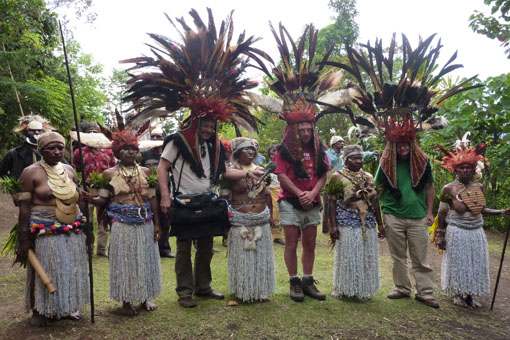
The Music Planet team – engineer James Birtwistle, Andy Kershaw and producer Roger Short – look at the wrong camera while on the job in Papua New Guinea
Yes indeed, as Andy Kershaw tells us on his promo video, filmed recently in Papua New Guinea, he and Lucy Duran are currently travelling the globe for a new eight-part series of world music programmes. Music Planet will be a companion series for BBC One’s major new natural history project Human Planet, presenting the music of some of the cultures featured in the TV series.
As I write, Andy is on his way to Thailand, there to join producer James Parkin and engineer James Birtwistle for a trip that includes Laos and Burma; tomorrow Lucy Duran and I, with engineer Martin Appleby, head off on a rather shorter haul to Galicia in northern Spain - this is for a feature on how the local traditions are influenced by music from across the sea (and did you know there was a mass migration of Britons buying villas in northern Spain in the sixth century, bringing Celtic culture to that part of the world?).
Just as Human Planet shows how people relate to their landscape and environment, in Music Planet, we’re showing how all this is reflected in the local music. So far Lucy has visited Madagascar, Kenya, Greenland and Mali, and Andy has been to the Solomon Islands as well as Papua New Guinea. There’s plenty more before the series broadcasts early next year. If you’re interested, we’ll let you know how we get on…
The Secret of Pigeon Poo
Morocco is a land steeped in a history as rich and as colourful as one of its most prized commodities - leather. We made our way to the ancient city of Fes (or Fez) where men have been tanning leather for over six centuries. This elaborate process has barely changed in those six hundred years and we were lucky enough to be guided through the many processes by Tammy, a young man already immersed in the art.
The Tannery itself is a collection of vats, dedicated to the different processes of tanning animal hides. There is a vast area of vats filled with liquid lime, in which the hides are immersed to soften them. This is an extremely dangerous process and the tanners go about their task with the barest of protection from the skin-burning lime. The crew survived unscathed except for the odd splash but this was enough to make us extremely wary.
From here the hides are washed in what can only be described as giant skin washing machines, whose constant drone supplies the tannery’s sound track. The next stage is the part we were especially interested in filming - the process of using pigeon poo to make the hides extremely supple. The droppings from wild pigeons are the only ones our character Tammy uses as they’re guaranteed to have a high level of ammonia, unlike their caged cousins. You see working for the BBC teaches you things you never knew you needed to know!
I have somehow managed to skip trying to describe the smell the Tannery emits… but here goes.. It’s like a thick mist, which is invisible to the eye but apparent to the skin, hair and especially nose of the unwary visitor. Our first day in and our Making Of cameraman, James Aldred, had a few close calls trying to keep his croissants down. All of us were totally taken aback by just how intense the smell was; it can only be described as smelling of rotting flesh with a tinge of sweetness. Oh yeah and add 40 degree heat to that recipe as well.
We shot some of the sequence in the Medina; this was a magical experience for me as it felt as if I was going back in time. The Medina in Fes is famous for its many winding narrow streets, the air filled with the smell of exotic spices and the sound of street sellers offering their wares to the haggling masses. Morocco has left a lasting impression on me and given me the urge to explore more foreign and ancient lands; a road trip across North Africa might be on the cards…Any takers?
Basket Trouble in Mali
by Cecilia Hue, Assistant Producer, Deserts/Grasslands Team
This is my last filming trip for ‘Human Planet’ and I am going back to Mali, which has become my second home since I joined the Bristol team a couple of years ago. The journey starts with the most extraordinary beginning, the stuff of Hollywood movies. A volcano which no-one has ever heard of, with an unpronounceable name, erupts in Iceland and spews so much volcanic ash into the air that European air space has ground to a halt - the morning we were supposed to fly to Mali! What would normally take five and half hours by plane ends up taking over 100 hours! Our production co-ordinator Isabelle Corr cool as a cucumber, as ever, (see photo below!) cunningly devises a roundabout route via ferry to northern Spain, a drive to Madrid and two flights that finally land us in Bamako, Mali.

Isabelle in the office
We are determined to make it in time for an event which only takes place once a year: a fishing festival in the desert, possibly the most dramatic sequence in the Deserts programme. Once in Mali we still have a two-day journey by road before we get to location. It is incredibly hot, 45 degrees (which for those who have never experienced it feels like having your head stuck in an oven ), we get punctures, and an incredible sandstorm which leaves the whole team caked in a layer of orange dust. We look as if we’ve all been ‘Tangoed’!
We finally arrive in the Dogon village of Bamba, built among boulders at the foot of an incredible 500 m high escarpment which cuts through the monotony of the Sahel for over a hundred miles. Everything here is parched as the dry season reaches its peak, leaving only one sacred pond full of catfish (which have retreated to this last haven as all the rivers dried up).
It’s 7am on Saturday 24th April. The day of the fishing festival has finally arrived. The Dogon are very superstitious. Women are not allowed anywhere near the sacred pond. As I am the only woman in the team I am gently ushered away from the scene by my fixer. I am told that I might lose my fertility if I stay. Frankly, I am not prepared to take any risks so I join the other women in the village. They are all busily getting ready for the celebration – braiding their hair and pounding millet for the big feast.
In the meantime, the crew is preparing to film the fishing frenzy which will last no more than 15 minutes and is unrepeatable for religious reasons. There’s no room for error. 4000 bare-chested men -including our character Amadou - have turned up to the pond the size of an Olympic swimming pool, armed with their cone-shaped fishing baskets, ready to charge in. They hope to catch a fish or two. If they do, they believe it will bring good rains and a subsequent abundant harvest for their family and their village.
Our character is fortunate to have made it to the festival. The day before, he almost got kidnapped from the film set by a mob of angry men from the neighbouring village. We had caused deep offence by bringing his fishing basket onto their territory. We soon discovered that the basket was a painful reminder of the village’s defeat against Bamba in the battle for control over the pond. We had made a terrible basket faux pas! We apologized profusely to Amadou’s arch enemies and were asked to give a small payment to repair the harm.
To see the full story of the fishing festival, look out for the “Human Planet” Deserts programme!
David and Goliath…
by Robin Cox, Human Planet Cameraman
Mamadou is our “David”. He’s only sixteen, with a small but strong frame, delicate features and a gentle demeanour. He is perfect for the role. Our Goliath is an elephant, a bull, one of a herd of desert elephants that share with Mamadou the watering hole of Banzena on which they both depend for survival in Mali’s arid Sahel desert. His arsenal is just a small handful of sticks.
A year ago Mamadou met his Goliath in a pitched battle on the shore of the lake. Having been without water for two days, his herd of fifty cows were gagging for a drink but the elephants had got there first, and they were not going to move aside. What followed in the moments afterwards we fortuitously captured on film. It was not the story we planned for the shoot, but it was perfect. Immediately after the battle was won, Mamadou and his cattle had drunk their fill and man and cows vanished back into the Sahel. Unbeknown to him, our “David” had been cast, and a mission had begun to seek him out and film more of his story. A search was launched across the many small nomadic settlements scattered over miles and miles of desert. A photo of our wanted man was presented at each stop and finally, after three days, he was found. Unfortunately, though not surprisingly, he was terrified, and he went into hiding for fear that he might be in trouble for his stick missile attack on the elephants. He was soon found again, reassured and eventually talked into letting us tell his tale.
I am here in Mali a year later to finish the sequence. Not present on the original shoot, I am introduced to Mamadou. Like many we have left behind around the world, he has become pretty well versed in the techniques of film making and now, having been able to see the previous year’s results, he is beginning to comprehend what on earth it is that we are trying to achieve. He knows that when I (the cameraman) say “speed” and the director says “action” it means that he should be doing something. Whether or not we have succeeded in conveying adequately what that something should be is another matter! Most of all he knows that hearing the phrase “just one last time” means it will probably not be the last time and it will most likely be ages before we are happy with the shot.
Generally we communicate without words and I act things out or use crude signs… faster, slower, closer, quieter, gentler. It’s a source of constant amusement for all. Much of the communication between us is by facial expression alone. Amusement, bemusement, anger, frustration, exhaustion and a myriad of other feelings are almost always clear to see in each others faces, with no need for translation. These things are universal. With these aids and cheeky smiles, we’ve got to know each other, and had some fun in the searing heat, sandstorms and mud.
Mamadou is in many ways as civilised a young man as you are likely to meet, gracious, kind, and intelligent. He carries himself with dignity despite a life spent in the desert living a nomadic herder’s life which I can only really describe as “old testament”. However he is wholly uneducated, quite unwashed and crudely dressed. Despite all this he is just as much a modern man as any one pacing the streets of London - just without all the gab, garments and gadgets.
On many occasions I have had the notion that I recognise something peculiarly familiar in a person, a characteristic, an inflection in the voice, sometimes combined with a facial expression, and it is like déjà vu. Today I realised that Mamadou is reminding me of someone. As he’s the only African cattle herder I know it’s not somebody just like him, but it is somebody just like him. There’s a theory, so I was once told, that there are only twelve (or was it twenty?) character types in the world. It’s rather simplifying things I know, and I don’t think anyone has ever successfully catalogued them, but my experiences this year of meeting so many far flung strangers have often borne it out. And Mamadou is reminding me of someone.
This sort of thing happens a lot, yesterday for example…. We’re out in the desert looking for lake-bound elephants when Meddi, our local Mali elephant expert, speaks to us through the door of the car. His gun is slung over his shoulder, he’s wearing a long cotton gown and a blue turban, his skin is dark, coarse and leathery from the relentless sun, he looks, and is, utterly exotic. As I listen to the conversation, ears half closed and not understanding hardly a word, I suddenly realise he reminds me so much of an old acquaintance from London, a Glaswegian red-headed accountant. I recognise him absolutely as being just like him, both the same type, and suddenly I know him so much better. Of course, the appearance of the two men could not be more different, but they share the same somewhat glazed look in their eyes, they have the same uncertain smile and both speak with a soft but deliberate tone. Their physiques are even alike, as though their flesh has grown upon their character, they are both lean and stringy. In so many ways they could be brothers.
This phenomenon has happened many times in the past few years with Human Planet and other projects. I have met a Nepalese porter who is just like my Wiltshire builder, hunted whales in Indonesia with a man much like my uncle Malcolm, met a tribal wife in India who reminds me of a nun from my convent school days and fixed fog nets with a Chilean man who reminds me of Pavarotti! I’ve begun to seek out the likenesses. First I recognise something familiar, sometimes instantly, sometimes gradually, then I rifle through the people I know, and have known and try to find the link. With no visual reference I hold up their characteristics in my mind like a photo, seeking out the person in my nomadic life who I know is just like them, though sometimes they fail to come to mind, like a forgotten tune. I am still working on Mamadou, but I know I know someone else just like him and I’m sure he won’t be a cattle herder.
Elephants in the Jungle
by Mihali Moore, Camera Assistant
I thought I had been to remote places in the past, but this trip proved that there is always somewhere further and more isolated than you think. Two flights, a long drive across politically unstable territory, a choice of a four hour trek through jungle or a three hour trip on a rickety truck. An experience that we were told (and can confirm) was like your shirt going through a tumble dryer with you still wearing it! Having trekked for a few hours, it was getting dark and the sound of the truck was music to our ears - or so we thought! After ten seconds of driving aboard, I instantly regretted it. It was terrifying. I lost count of the times I thought it was going to tip over. Perhaps the chap next to me had the right idea. Reeking of whiskey, I don’t think he was worried about anything. Luckily the truck got stuck near the camp and we gladly walked the last twenty minutes by foot. The truck would later be rescued by our pachyderm friends and brought to its final destination.
Nonetheless we arrived safe and sound in the evening to the camp that would be our home for the next two weeks. Our fixer had done an impressive job. We found a selection of individual tents with camp beds, cooking equipment, tables, lights and even power sockets in each one. Mod cons in the deep jungle. Not bad at all!
The next day we met some of the elephants for the first time and carried out a recce of the area for filming spots. I had never been this close to these animals before and was instantly struck by their majestic grace. Wary of our presence, you could tell they knew something was up. We also had the pleasure of meeting the elephant contractor. With his penchant for whiskey and the way the others behaved around him, it was clear he wanted to be perceived as the boss. During our numerous encounters with him, we would find ourselves having to respect his customs and offers of whiskey, whilst listening to his thoughts on what the world would be like without water?!? On the subject of water, it had started to rain. Monsoon season was round the corner and the chances of nicely backlit elephants working in harmony were looking slim.
It was amazing to see how these creatures worked. They can understand up to 65 commands and push heavy logs around as if they were twigs. Each elephant has its own mahout, a young man who perches atop the elephant and ‘drives’ him. Using commands and pressure with their feet, the mahout can direct, steer and command the elephant at a remarkable pace. Keeping up with them wasn’t easy and it’s clear that using the elephant is the only way to get the job done. Ramprashad was our main elephant and he was an impressive size. Whilst slightly apprehensive of us at first, he soon warmed to us and even let us ride him for a bit. In fact all the elephants seemed to accept us quite quickly. At one point I remember standing on a track in a melee of elephants that were trying to push a laden truck up a muddy slope. All I could see was wrinkly skin. I looked at Robin Cox, our cameraman, (to whom I was tethered). He was breathing in deeply and arching his back, desperately trying to fit into a gap between the dense jungle face and an elephant’s belly.
What I found remarkable is the mutual understanding between the mahout and elephant. The elephant will only work for a few hours and if it doesn’t want to do something it quite simply will not. The mahout diligently washes and feeds him each day, which strengthens the bond between the two of them. Each evening the elephant is released into the jungle to roam free. The next day the mahout must look for the animal, which, despite its freedom, won’t have gone far. The chains go on and the elephant knows it’s back to work, a true example of beast and man working in harmony. It was a real privilege to see this unique and rare tradition in action. You’ll get to get to see the reason why we were filming this partnership in 2011. Hopefully we provided a good story for the series!
Papua New Guinea - Wild Frontier
By Nicolas Brown, Producer/Director, Arctic and Mountains Team
Papua New Guinea has the feel of the Wild West. Because it’s a mountainous tropical island it doesn’t physically resemble a Spaghetti Western, but the larger than life characters and the ever-present threat of violence make it a frontier. This could be a set for Clint Eastwood- with a pierced nose.
As our small airplane nears its destination—Wewak town- we fly over the mighty Sepik River. Braided into a wide Delta of graceful interlocking ox bows, this is how rivers used to look hundreds of years ago. No channels or dams or bridges. The wildness is just a taste of what is around the corner.
On our descent, we are treated to a breathtaking overview. Wewak town is in the shadow of Mt. Turu, a 1600-metre high peak covered in dense jungle. But the real story—the one we have come to film—lies beneath the canopy, where literally hundreds of tribes make their living on the steep mountain slopes. My burning question is—exactly who have we come all this way to film?
In Papua New Guinea there are over 700 distinct tribes, in the East Sepik province (which is half the size of Ireland) there are 88 distinct languages spoken. Around this one single mountain- Mt. Turu- we counted 7 different ethnic groups. In terms of people, this place is wildly diverse.
This is the home of cannibalism and many say there are still tribes in the mountains that cannibalise each other. As recently the 1970s, four Dutch families were killed and eaten. Two years after that a priest and his 12 companions were killed.
Possibly more worrying for a BBC film crew, Wewak is famous for cargo cults. Prior to this trip, I had never heard of such a thing, but evidently during WWII the Japanese and Americans flew a lot of supplies—cargo- to the region. Once the war ended, the cargo stopped coming. In an attempt to get it back, local tribes evolved religious rituals that mimicked the activities of soldiers, such as wearing “headphones” made of wood and speaking into “radios” woven out of straw. You’d think they would have got tired of waiting for cargo by now, but evidently not.
When I suggested our original plan to fly to our location using helicopters, the image of us arriving from the sky with dozens of boxes of film equipment filled our local fixer with dread. “Are you crazy? You cannot come out of the sky carrying boxes of what looks like cargo—that would cause big trouble.” But, as we are about to find out, “big trouble” is coming anyway, in a different guise.
It starts on our first day. We had just loaded the vehicles with our filming equipment when the hotel owner enters and announces that a week ago, there was a jail-break in Port Moresby’ maximum security prison. Twelve of the most notorious criminals in PNG had escaped, including the most notorious of all—William Kapris. The hotel owner goes on to say that someone has just hijacked a 4×4 vehicle earlier this morning. Since William Kapris grew up near Wewak, the inference is that Kapris is back and is collecting 4x4s to escape into the mountains.
Two of the best 4×4 vehicles in town are ours- parked in front of the hotel, full of our gear. We debate our options. Some are suggesting that a BBC film crew would make a useful bargaining tool for a desperate criminal gang. Do we keep filming? Or do we hide in the hotel and watch the armed guards patrol the perimeter, while we put our feet up and drink beer? The decision falls to me.
I look at the sky which is moody and dark—this is the rainy season, and if we don’t leave now there’s a real chance that the roads will get so muddy that we will never reach our location. So I say, “let’s go filming, but keep our eyes and ears open.”
Of course, the minute we leave the hotel, everyone is a suspect. That man by the hedge—does he look like a mass murderer? That boy playing with his football against the wall—is he going to phone Kapris and tell him the 4x4s are on the way? On the road, the woman with her bag of vegetables—I imagine she is William’s sister who eventually liaises with the international hostage negotiators, saying “Don’t you think a BBC Producer’s life is worth a little more money than that? Pay up.”
Our visit to the local police is not encouraging. The Commander in Chief sees the BBC coming, and seizes a press opportunity. “Everything is under control—we have shoot to kill orders, and we are sure that we will find him and he will die.” I wanted to tell him, “We don’t care if you catch Kapris or not—we just don’t want us to be shot in some kind of crossfire confusion,” but I bit my lip.
We drive to our location without incident. At the village we are welcomed by the elders, and by our fascinating hero, Marcus. Marcus is a Yangoru Boiken hunter, but to the locals, he is a man feared for his magic powers.
To get our gear out to Marcus’ hunting grounds requires 40 some porters. So the whole village it seems comes under our employ. Our fixer AJ, who has done this before, makes a clear list of everyone’s names, and what we will pay them. And we set off.
On the way we are told never to stray from the path—not even to pee. Evidently, people from rival tribes will hide in the bushes, and then will leap out and stab you with a syringe filled with the poison of the giant centipedes that live here. Apparently it’s a very painful death.
Why someone would want to randomly murder you is not made clear. When I ask, the only answer that comes back is “witchcraft”. In the end I conclude that it is an effective way of controlling us—like telling children ghost stories so they don’t go wandering off at night.
We eventually film our sequence—which is a wonderful gothic tale that has never been filmed before. Marcus and his fellow hunters try to catch the giant fruit bats that fly over the canopy in the dead of night. How they catch them is ingenious and you can find out the whole story when you watch the mountains episode of Human Planet. 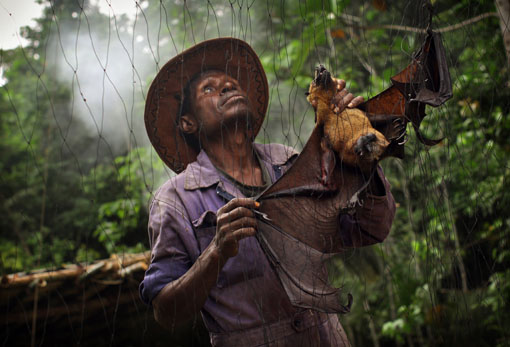
- Marcus capturing a bat in the net
We get to a point in the filming where we need to move locations to a different gap. It means a change in location, and a change in porters. So we are paying the porters and the trouble starts. Most people understand that in order to get paid, they need to have put their names on a list when they carried a load for us. But a few shifty looking men (who none of us had ever seen before) declare that they had worked for us but their names weren’t on the list. It gets heated. People are slamming fists, arguing with each other and with us. I can see the violence escalating.
So we decide to pay everyone double. And leave quickly. This puts a huge hole in our finances, but at least no-one has been hurt.
At our new location, there are more fees to be negotiated with the landowner. And we’re low on cash. But we make a deal, and begin filming. Then after about half a day, a man comes crashing through the jungle with a few henchmen wielding machetes. He declares that we are on his land, and he needs payment, or he will take action.
We explain that we have a deal in place with one person who owns the land. So who is this new guy? He says, “I am Joseph, tribal chief and the elder brother of the landowner.” Which makes Joseph a more senior landowner. And Joseph wasn’t informed about our project, which is against the tribal law. We immediately halt filming. We are back at the negotiating table.
Joseph has a remarkable command of legal sounding phrases, like “grievance” and “landowner rights”. And he wants money—a lot of it. And if we go home now, we can’t finish the film. Joseph seems to know this—he has a highly intuitive grasp of the art of blackmail.
Throughout the negotiations, I wryly note that Joseph’s younger brother—who we made a deal with in the first place—keeps schtum. He sees the possibility of more money coming his way, however indirectly. We are stuck, without enough cash to pay up, and with a half shot film.
Then, a few of our porters come over with a suggestion. They don’t like the blackmail that is going on, and they’ve never liked Joseph. He does this sort of thing all the time, and keeps all the money to himself. So they helpfully offer to get Joseph “drunk.”
“Oh that’s a nice gesture,” I say, “but it won’t really solve this predicament, will it?” They go on to explain that “getting someone drunk” is a euphemism for taking them into the woods and chopping them into bits with machetes. I can’t contain my horror—“Lord, no, don’t get him drunk! I don’t like the old codger, but that’s going way too far!”
In the end we compromise on a reduced fee for Joseph that pretty much ensures our “end of filming celebration” will be us drinking a round of tap water in the airport lounge. And Joseph is so pleased that he managed to squeeze more money from us that he invites a bunch of his friends to come watch us film. Every time he catches my eye, I wince, and it amuses him immensely. But we get the job done.
On our return journey I catch wind of a radio programme. It’s an English language call in show, and a voice speaks to the host. “This is William Kapris.” I am stunned by the meekness in his voice. To this day, I have no idea if this is a true story or just a prank, but the man claiming to be Kapris explains that the whole jail- break was organised by the government so that they could execute him on sight. It seems he knew some things about high-ranking officials that they didn’t want to come out in his trial. Now he’s on the run—maybe in Wewak—wanted dead or alive.
Like I said, Papua New Guinea is a bit of a frontier, and Wewak town belongs in the Wild West. Kapris is Jesse James. Joseph is Billy the Kid. And we are just a bunch of Westerners whose pockets were easily emptied.
A Cameraman’s View
by Toby Strong, Freelance Cameraman with Deserts/Grasslands Team
Mongolians, Bushmen, Dorobo and Tubu.
Minus fifty degrees to plus fifty degrees.
Hunters, dancers, herders and traders.
Helicopters, hot air balloons, horses and dug outs.
The last couple of years have given me a breadth and depth of experience that as a young boy I couldn’t have dreamed of.
Thanks to the faith of the grasslands and deserts team I have hunted kudu in the Kalahari; soared over camel trains crossing the Sahara; run on foot towards feeding lions; chased wolves on camel back and caught snakes in a canoe. I’ve danced through the night with the Wodaabe, followed a bird to raid a honey comb and rounded up 2,000 cattle by chopper.
To film all this all this I’ve had toys, lots of toys! (of the highly technical variety)…
Macro lenses, long lenses, time lapse, underwater cameras, infra-red cameras, cameras in helicopters, cameras on rafts, cameras on quad bike, horse back and camel back. Cranes, tracks, jibs, steadicams and hot air balloons.
I’ve travelled to some of the most remote corners of the planet and returned with amazing memories and a few exotic diseases. We managed to knock down a teensy weensy part of a sixth century fort, discovered a carpet viper up my shorts, crashed our balloon and got chased out a hide by a leopard.
Compared to some of the Human Planet shoots, a walk in the park.
So what will I take away from filming on this unique series? Apart from the obvious amazing experiences it will be the shared sense of trying to do something very special with the incredible Human Planet team.
While every tribe I’ve worked with has their own unique and special way of life , I have found two common links between everyone - humour and kindness.
I feel humbled and honoured to have worked on this series and with such wonderful people.
Dale Templar, Series Producer
What Toby is talking about here is common humanity. While making this series we have tried to celebrate the similarities and differences in all of us and I really hope this is played out when people watch the series.
Slip Sliding in Ladakh
by Robin Cox, freelance cameraman, Human Planet
Snow covered our footsteps as we retreated from Pidmo. It had been snowing on and off for a week, the flat roofs of every mud brick house were thick with it and the residents acknowledged our departure as they shovelled their rooftops.
Three days earlier we had advanced downstream on the frozen Zanskar river from Zangla, a mere 8.5km, with the intention that we would progress further the next day to begin our filming. The Chadar, or “sheet” as the iced river is known in winter, had proved to be in poor shape that day. Sections of solid ice gave way frequently to slushy margins and became impassable so we had to resort to the river banks, ploughing through waist deep snow. It was exhausting in the extreme, no step ever finding a sound footing. Two of our heavily laden porters had been ekeing out every bit of open ice when they overwhelmed the thin crust and crashed through. Climbing out, soaked to the skin, they marched on before they froze. No surprise then, that on our arrival at Pidmo morale was low.
The week’s snow had wrecked the length of the Chadar, a hundred avalanches had swooped down onto the ice, puncturing the river’s skin and damming its flow. The pressure then built beneath the surface of the ice and blew huge holes in the ice sheet, as though a giant’s fist had struck it. Water had flooded over the ice, flushing loose shards down stream till they piled up like flotsam against the snowy dam. Some less fortunate than us had been walking on the river when the avalanches occurred. One man, a worker building a new road in the valley, was trapped under an avalanche and sadly perished; others had been forced to wade up to their waists through the icy flood waters to reach safety.
Our mission was to film eleven children and seven fathers as they walked the six day trek along the frozen river from Zangla, a 4000m high mountain village in the Zanskar region of the Tibetan Plateau. Their destination the town of Leh, where the children were being returning to school after the winter holiday. This yearly pilgrimage is routine for the people of the area. The Chadar forms a seasonal highway through stunning gorges, allowing relatively easy access out of the mountains, impossible by road during the winter months when the mountain passes are closed by snow. It is usually traversed without great difficulty and we ourselves had walked upstream on smooth firm ice just a week before with smiles on our faces. The river had been alive with local people marching in both directions, carrying goods of all kinds.
We had been told that in living memory there had been no deaths in avalanches and only two deaths due to drowning when the ice had given way in the spring. We had felt confident that our return trip would be just as easy. To be extra cautious we had left an extra week to make it down the river well before the end of February when traditionally the ice begins to melt and the Chadar becomes perilous. This year the un-seasonal snow had changed everything, and it began to seem as if our film was ill-fated.
Now we found ourselves in retreat - a great caravan of fifty porters carrying our 600Kg of film kit, camping gear and supplies. Days earlier when we started optimistically from Zangla, we had begun to hear the bad news… ‘the worst Chadar I have ever seen’ said one local when we arrived in Pidmo and dissent began to spread through our porters. A meeting was held with the fathers and guides while the porters had their own out in the snow, a shop stewards meeting of a kind. The consensus was not good, nobody was willing to go further so a retreat back to Zangla was the only option.
The river was torturously hard going so we walked on the road, relentlessly trudging in deep snow, navigating a path by telegraph poles, a beaten army returning from battle. The 8.5km took an aching six and a half hours; it was last light as we clawed our way into Zangla and back up the steps of Stanzin’s house, one of the fathers with whom we were staying. We collapsed - the altitude and snow had pushed us to the extreme. Too breathless to talk, David the director asked me to phone the producer, Mark Flowers, back in the UK to let him know of our retreat. Over the next 24 hours a plan to evacuate by helicopter formed and we contemplated abandoning the film.
There was only one chance to save the situation. The fathers told us that given a good spell of clear cold weather, just maybe the ice would heal and we could try again. We decided to sit it out. Next morning the sun shone in a deep blue sky. Hopes were raised and rescue postponed. One clear day followed another as we eagerly awaited news of an arrival from downriver that would signify it was once more passable. We played ball with Stanzin’s daughter and son, Dolkar and Chosing, on the rooftop whilst our guides kept an eye on the distant river. We washed our stinking thermals and waited… but no-one came.
Fears grew that the Chadar was finished for the year. We were washed around in a sea of consternation, trying to find a way to rescue the film before we were evacuated. Finally we formed a plan: we would film with just Stanzin and his two children walking as far as they could before being forced to turn back by the obstacle that lay somewhere downstream… at least we would have something to show for our toil. So three days after returning beaten to Zangla we set out once more for the river. We followed the trail of a snow-plough clearing the route to the road builders’ camp to bring home the dead worker’s body. Like a funeral procession, we followed the rattling machine to the ramshackle camp; the atmosphere in the camp was sobering. The porters again began to lose heart and more negotiations followed. Having successfully talked them round, we set out early the next morning.
It was icy cold, -30C, a bitter but sweet climate in light of our prayers for the Chadar to be safe. We clambered over the avalanches in silence, spread out to minimise risk, and advancing as fast as we could to get past the east facing slopes before the heat of the rising sun caused further falls. By lunchtime we had arrived safely back on the frozen river. The section we found ourselves on seemed solid enough, but as we ventured downstream the havoc the avalanches had wrought on the river became obvious, and there were still monumental obstacles out of sight for still no-one appeared from downstream. We filmed for two days, making the most of the weather until we reached a pool of open water only negotiable by means of clambering over a narrow rocky ledge. What seemed impossible for us to negotiate, seemed a breeze for the kids, but we felt we could go not go further with our equipment and returned to camp for the night. It seemed our story was over, all that remained to do were a few shots the following morning and then we would retreat to await the airlift. We had done our best in the circumstances.
I awoke the next morning to the familiar sleeping bag, iced by my night’s breath. There was much chatter in the camp and the chef was singing and shouting, which was not unusual, but there was a good vibe in the air. We gradually surfaced, squeezing into our rock hard boots and many thermal layers. Nick, the sound recordist, (always first into the mess tent for hot tea with chef) was greeted by good news. Max, David and I joined him and heard it too. That morning, at the crack of dawn, two men had arrived from down river, they had made it, the ice was apparently back, rough in places but sound and passable… suddenly our story was saved. Later that morning, twenty-one days after leaving Leh, we began to walk the Chadar to school with Dolkar, Chosing and Stanzin and the real film began. I have never known such a roller coaster of a shoot, or ever been away so long and achieved so little with the very real prospect of coming home empty handed.
We reached the school in Leh on the last day of the holidays and proudly sent Dolkar in her crisp new uniform with her brother through the school gates to begin their new term. Mission complete, we headed for the comfort of a hotel. Father Stanzin turned on his heel to start the return trip back to Zangla. He was only halfway through his journey, but as usual he took it in his stride.
Masters of the jungle
by Willow Murton, Assistant Producer, Oceans and Jungles team
There are places that you imagine you may return to and people you may meet again and then there are farewells to people and places you assume you will hold as a treasured memories. For me Aurelio village was one of those places; so remote, so distant, one of only two communities where the Matis of Brazil live. Set in the vast indigenous Vale do Javari reserve, it takes several days’ boat ride to reach the village, as well as many months of painstaking preparation. I had first come here to make the series “Tribe” and couldn’t believe my luck when I was asked to make a return trip for “Human Planet”– a rare privilege.
There is good reason to return to this remote corner of the Amazon for Human Planet’s Jungles episode. The Matis are true masters of the rainforest. Pete, our endurance fit cameraman, and I are reminded of this on our first filming day. An hour into the hunt we’d come to film, we are up to our knees, even thighs at times in swamp mud, soaked through by the unrelenting rain and all eyes on deadly poisoned darts being fired over our heads! Pete turns to me and asks if it’s all going to be like this?
Luckily it isn’t. Thank goodness, our second hunt is on firmer, drier ground. We follow the hunters into their world, immersed in the sounds and signs of the forest as we track monkeys in the canopy. For all the planning, there are still situations that happen which are unimaginable and that can never be relived. After many hours hunting with no success, we are about to give up when suddenly a troop of monkeys scatters across the trees. The hunters follow, taking aim in the tree tops. The camera’s eye is no match for the trained focus of the hunters. They find their mark fast and before long, they are tying dead monkeys together to carry them back through the jungle. Exhilarated by the speed and skill of our forest guides, we head back to camp just as the rain starts to fall.
Part of our return journey is by boat. There we sit, the two of us, blowpipes and cameras balanced on benches, monkeys at our feet and a group of hunters devouring the last of the snacks that we brought. Survival in the jungle is about taking the opportunities that it offers – and a camera crew’s rations are as fair game as anything else found in the canopy. Pete turns to me, waving the sandflies from his eyes, and he utters the words no traveller should speak: “Imagine if we got stuck here now”.
At that moment the boats motor clunks and we are indeed stuck – the hungry hunters and us up an Amazonian creek with no paddle! The boatmen, calm as ever, are quick in their evaluation of the situation. The motor is beyond repair but we are not beyond help. Bushe, the Matis translator who I also worked with four years ago, turns to me and instructs me to use the satellite phone to contact the village to arrange a rescue. It will be long soggy bug filled few hours before anyone can reach us. We ask Bushe what they would do without the BBC’s technological intervention. ”The forest has everything that the Matis need”, he replies and every Matis knows the paths that winds through the forest to the village.
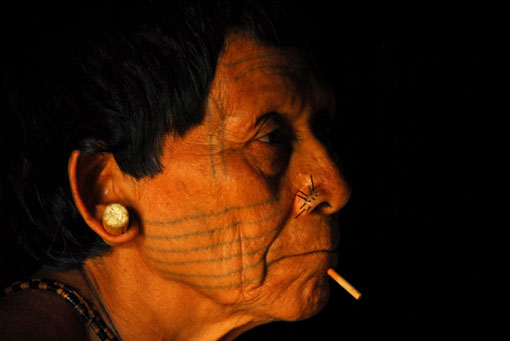
This is Tupa. She guards and administers frog poison rubbed into the hunters' arms to purify them before the hunt
We cover ourselves in insect repellent and lie back on the roof of the boat in beautiful resignation to the sunset and our eventual rescue. What passes in the next few hours is one of those gifts of disguised fortune – stolen time and experiences. Floating across the river, the boatmen set nets and within minutes, they have gathered a dozen fish for supper including piranha. Soon, we are back on the bank, in front of a bright fire, stabbed with sticks of fresh fish. We joke around the flames, laughing into the smoke. The fish is quickly eaten with the bizarre addition of fruit flavoured rehydration salts for those who prefer their piranha on the tropical tasting side.
Then we all wash in the river, as our socks dry on sticks over the embers. Laughing still, we clamber back onto our boat. The sunset darkens to a thick sky studded with stars and the sounds of the forest once more. Somewhere in the distance, a motor can be heard but for the moment, the jungle absorbs us entirely. It is so good to be back amongst my Matis friends.
The Brunei Blog
She’ll be Wearing Pink Pyjamas When She Comes!
by Ben Southwell, Producer/Director, Jungles and
Jo Manley, Production Coordinator, Oceans & Jungles
I have never sweated so much in my life. Just sitting still I’d be dripping. Within minutes of leaving camp each day I’d be drenched as much as if I’d jumped in the river. It wasn’t the heat, it was the cloying humidity that made it so hard to move around.
We were filming the British Army Jungle Warfare Advisers’ Course in Brunei, one of the toughest courses the army runs. After a week of trekking after ‘students’ up and down steep tree-covered slopes, I fully understood why the army choose this terrain for their course. It doesn’t so much sap your energy as rip it out of you and stamp all over it. There were soldiers putting battered boots on over feet almost stripped of skin in order to complete this first stage of their training.
The Instructors on the course deserve immense credit. Many of them have spent years working in the jungle and their knowledge of this environment and their care for it was clear for all to see. The army have a no cutting policy here – they don’t want this primary forest becoming a wasteland because of their actions. They have a deep respect for the jungle.
For me the hardest thing was remembering to drink, drink again, and drink some more. We were advised that we would be sweating so much that we should be drinking 10 litres a day. This after leaving Britain in snow! Our production co-ordinator Jo Manley had never filmed in the jungle which presented her with a unique set of challenges…
…..and a ‘worry list’ as long as my arm!
Having been on Human Planet for over two years and sent off countless crews to all over the world, I had never actually been on a foreign trip myself. However, with the rest of the Jungle team filming in Brazil and Tom the Producer awaiting a new baby in Bristol, this time I was sent on location! I went with Ben the Director (my blog co-writer) , Toby the cameraman and Mihali sound/camera assistant to experience first hand the difficulties of operating in the field and how annoying it is trying to get Sat Phone reception from a Jungle!
I was quite nervous about a number of things before I left the UK. Ben joked that I would be transformed from pink-loving Jo to Rambette, the jungle ninja, never seen without a knife between her teeth! I wasn’t convinced.…
Before I left, my ‘worry list’ was pretty comprehensive: here’s a taster…
I had an irrational fear of moths and was told they would be every-where and as big as dinner plates (thanks for that Dale – Series Producer!)
I didn’t like the thought of bugs in my breakfast or bugs having me for breakfast including leeches sucking my blood
Getting out of my hammock for a wee in the night and not being able to find my way back (as it turns out this did happen to one of the students but thankfully not to me!)
Being the only girl amongst 60 men
Being told off by the Sergeant Major for not having the correct boots (I did have a few comments but it wasn’t my fault I couldn’t get Jungle boots in a size 3!!)
I could go on…
We flew in to the jungle by helicopter, which was amazing. I’d never been in a helicopter before and I loved it! I thought the jungle below looked just like broccoli, the tops of trees were packed together and looked totally impenetrable to anything, including light. I thought about how dark it would be under the canopy and it made me think about all the creepy crawlies hiding down there waiting to get me!
When we arrived at the LP (Landing point) we had to walk down a hill to our camp and my eyes were on constant bug watch looking out for leeches and anything else trying to crawl up my trouser leg! Brunei has a pristine primary jungle and I’d been told it was a ‘clean’ jungle but I still didn’t really appreciate how beautiful and bug free it would be until we got there. The longer I was there the shorter my worry list became and I started to really like being in the Jungle, sleeping in a hammock and being woken up by the gibbons singing to each other. I even let a moth land on my hand! The first night I had to get Mihali to escort me to the toilet but by the end of the week I was happily walking there on my own in the dark so I could see the glowing fungi. Rambette was in the making!
Towards the end of the week we went on the Close Target Recognisance (CTR) part of the course and we stayed in the enemy camp overnight whilst the students observed what was going on. The next morning Sally the tracker dog took us to find the students, who had spent a long night sitting on the jungle floor in the moonless night getting eaten alive by bugs and leeches. One of the students said to me ‘was it my imagination or were you walking around the enemy camp in a pair of pink pyjamas last night?’ it seems my transformation into Rambette was still a way off….
Jo rose to the occasion magnificently and I’m sure those pink pyjamas will become part of the course folklore for years to come.
PC Heads for the Heights
By Andrea Jones, Production Coordinator, Rivers/Urban Team
The lead up to a shoot can be hectic – especially when one team is heading off to Dubai, another is getting ready for a frozen river trek in the Himalayas with 400kg of kit and another’s filming creepy crawlies in London all in the space of a month! Things normally calm down for myself and the office team once the crew leaves for the airport. We pack them into the van, wish them well and then breathe a sigh of relief as we watch them drive off into the sunset. Apart from the regular check in calls, we don’t hear much from them until they get back. This time was different - after 18 months sending my team all over the world, I found myself in the van with crew and kit, on the way to Heathrow on my first Human Planet shoot. Mark Flowers (director), the crew and I were heading for Dubai to film the story of a falconer for our Urban episode.
I couldn’t believe how easy they made it seem to get 18 cases of camera kit onto the plane, then off again at the other end - not to mention clearing customs with it. I think I’ve got a tough time when I travel back home to Oz with 2 cases. The funny thing is, 18 cases is nothing compared to the 40 we sometimes travel with! The ability to steer two to three airport trolleys at a time should be a pre-requisite for anyone going on location - it’s quite a skill. With all the kit safely at the hotel, our thoughts turned to the fun yet frightening part – the filming! We spent the next eight days with falconer David Stead and his amazing falcons at two of Dubai’s five star hotels. To get the full story you will need to watch the series.
Early on in the shoot, we were given permission to film from the helipad of the Burj Al Arab hotel – perched onto the front of the building over 200m up! As we walked up the red carpet and onto the helipad, we realised what a privilege it was to be able to film from such a great vantage point, where you could see the ever changing skyline of Dubai’s business district in all its glory – it’s lucky none of us were afraid of heights!
Speaking of heights, we were also lucky enough to travel to the 124th floor observation deck of the recently opened Burj Khalifa, the world’s tallest building. Being up that high gave us a different perspective of the city, and a perfect spot to film the sun rising over the desert. Looking at it now, it’s hard to believe that just 31 years ago Dubai’s business district had only one skyscraper, the World Trade Centre.
The most challenging day of the trip for me was the Aerial filming day, where I was on the ground coordinating David and his birds, while my producer Mark and our Cineflex (Aerial) cameraman Simon were up in the helicopter. We had arranged for David and his falcons to be on the roof of the hotel ready for filming at 7:45am, so you can imagine my surprise when I heard the unmistakable buzzing of the chopper flying over just before 7:30! Luckily they were just getting a feel for the location, but I must admit I got a little worried, as we were on the ground at the time with one lift, 6 flights of stairs and a 10 foot ladder standing between us and the rooftop! As the production coordinator I look after the budgets and know the considerable investment needed to commission a Cineflex aerial shoot. I certainly didn’t want to be the one to jeopardise it – luckily our characters, human and animal, we were ready on time and all went to plan, David and his falcons did a fantastic job and we ended up with some extremely exciting footage.
It was great to get out on location and get a taste for some of the challenges the team has to deal with every time they go away. We were lucky , working in a fully functioning stunning city with a great subject in David and his birds, coupled with our talented crew. The alchemy that is television production all came together and we left with another stunning sequence for the series.
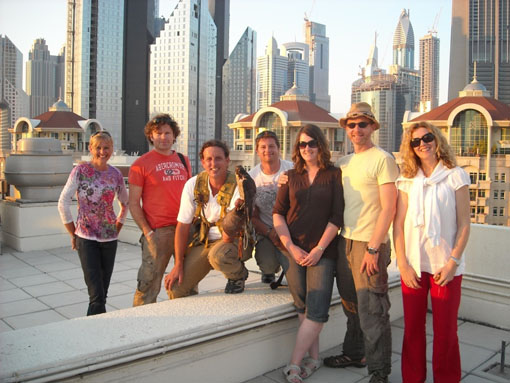
- The Crew (L-R) – Nicola Ohlenforst (David’s business partner), Kieran Doherty (Photographer), David Stead (Falconer), Mark MacEwen (Cameraman), Andrea Jones (PC), Mark Flowers (Producer/Director) and Julia Wheeler (Fixer)
The eight days on location went by so quickly, and before I knew it we were on our way back home. So for now it’s back in the office for me, where we are getting ready for another shoot, this time to Ottawa. Hopefully there’s another adventure in the not too distant future, but for now it’s back to budgets…
Elephants by starlight
by Renee Godfrey, Researcher, Rivers/Urban team
As an anthropologist, most of my television work has been with remote indigenous communities rather than filming with or looking at wildlife. This is where the Human Planet series has stretched my experiences hugely. When I found out about the Samburu story and their relationship with elephants, it seemed a dream come true– the Samburu, one of Kenya’s most traditional and colourful tribal groups; and elephants –one of the world’s most majestic and beautiful animals.
The Human Planet team often find ourselves wide eyed while filming on location, but the Samburu shoot in one of the least accessible parts of an inaccessible region in northern Kenya was an assault on all the senses. We had the usual logistical fun and games of getting a crew and kit to a remote corner of the world and setting up camp but this shoot also presented new challenges. The elephants in the area are at their most active in the riverbed at night time – so, without waving spotlights around like an intimidating laser show, how do we film them in the dark? The answer was an image intensifier camera, a sky brimming with stars, and the light of a full heavy moon. Problem one solved.
The Samburu District covers just over 20,000 square kms. There are no real roads, just miles of raw, unexplored Africa. Transport is by foot, camel or, where sandy soils allow and you can get enough fuel, 4X4. It is Samburu tribal land, no fences, no private game reserves, few if any tourists - man and beast are wonderfully free to roam wherever and whenever they wish.
Thankfully we had the help of the Milgis Trust and their local scouts who sustain and protect the wildlife in the area. Out on foot patrol on the silver sand of the Milgis River bed, the scouts track elephants - reading the landscape for a snapped twig or fresh dung which give clues to when elephants have passed and where they might be headed next. Using these skills, the Milgis scouts are able to map out with amazing precision where we will get our best chances of being in the right spot at the right time to film the elephants.
As soon as the sun sets, hush is enforced. Sitting for eight hours in a hide under the cover of moonlit acacia branches has to be a still and quiet time. Any break in the silence, any sudden movement and the elephants you hope and pray are heading your way, may hear and run, for fear there might be men with guns as opposed to men with camera lenses.
So we sit and wait downwind in our hide, in the black of the night, listening for breaking branches as elephants walk through the bush or the padding of big feet on sand. The riverbed below is an opera stage and we sit above in the Gods, waiting for the performance to begin. The moon aches with light as it casts shadows that play tricks on your eyes. Suddenly and silently, from nowhere, a herd of 18 elephants arrive on stage; babies, mothers, brothers all dance under the moonlight. White faces and whiter teeth smile, and we try to breathe and blink as quietly as we can. Mark Deeble, the cameraman, changes lenses on the camera as if carrying out a Tai Chi routine – every move thought through and with slow, silent grace so as to keep the elephants unaware of our existence.
The elephants move underneath us, babies playing with each other and running around gangly legged and trunked, trying to copy the behaviour of their elegant peers. We are captivated, camera rolling. Trunks touch trunks and tusks gleam brilliantly, irridescent under Nature’s spotlight, until the sound of a distant trumpeting call from deep within the bush breaks the silence and lifts every hair on my body. Another herd are on their way – tonight’s performance is far from coming to an end.
Unexpectedly the evening breeze drops and a light wind blows from our hide down into the riverbed. Within seconds, the herd of elephants below us run off in total silence, back into the acacias. The wind picks up and we realise our human scent will now be drifting up the riverbed and the wise elephants will be heading far away from us. Exhausted but invigorated by what we have just witnessed, it’s time for bed on our mattresses under the blanket of stars. If the wind changes they could come back - this time the elephants would be the ones aware of our existence… while we dream and snore the rest of the night away.
For beautiful pictures of elephants by night, you’ll have to watch the programme!The Secrets of Sound
by Willow Murton, Assistant Producer, Jungles/Oceans team
My journey as a “soundie” began in the hot, Sahara desert of Algeria. (For those of you who may be wondering, a “soundie” is the job of a sound recordist. On this shoot, Willow - who is our assistant producer on Oceans and Jungles - stepped in to help the Deserts team, who on this occasion were not able to take a professional recordist on location - from Dale Templar - Series Producer) In a melting frustration of entangled cables, dying batteries and conflicting noises, I remembered the words of a soundman from another trip some years ago. Pete was, he admitted, on a perpetual quest for silence. I understand now as I had not before. Pete, I have joined you on your quest for silence: pure, empty silence. Even the quietest moments in the Sahara have been full of sound.
I have had to learn quickly on this journey. Firstly, as you might expect, the world of sound has nothing to do with the look of things – I am all about the noise. So there I stand, like some style-less parody of a desert cowboy with my cable lassoes, gun mic on hip, dark rim of a fading sun hat and the closest thing to a trusty steed being a stubborn donkey. He looks at me with discernible mirth, flicks his long ears and lets out a bellow. I re-set my levels.
The other lessons follow: that the boldest person on screen may not speak with the most confident or eloquent voice; the quietest voice may give the most melodious song and the softest whisper can echo noisily. I learnt the hard way that children can scream very loudly on a football pitch when a goal is scored - my mixer and I are still recovering. I wouldn’t say I’ve come to love my cables but I appreciate velcro and cable ties more than I would ever have thought. I’ve developed sympathy for the soundman’s plight of always being in the wrong place at the wrong time as I dodge my own shadow, the cameraman, my trailing cables and the football back on that pitch. The look is still not a good one but I have rediscovered headscarves – headphones bulge under that hat and I hold my boom at jaunty angles. I redefine myself – at times I am On Speed and dynamic and at the flip of a switch, I transform to Off Speed and phantom powered.
My soundie guise lends me a proximity and a pass into another world with the tune of water flowing freely from wells and the rasping breath of the wind on sand. At times, you wish for greater distance. Roads many miles away rumble into uninhabited landscapes and people’s voices appear over an empty horizon. There is also definitely something rather uncomfortable in the intimate sound of a stranger heavily breathing into your ears.
There may be times when I wish for silence but with my headphones on, I have discovered a secret world of unimaginable sound – the orchestra of the garden with its palm percussion and insect chatter, the varying pitches of a simple stringed instrument, waterfalls of pouring tea and the subtleties of the dawn song.
And by the way, whoever burped during morning prayers, you know who you are and so do I.
Saharan Love Affair?
by Jane Atkins, Researcher, Deserts and Grasslands
My love affair with the Sahara started last year when I was looking for the most impressive and beautiful place to film people searching for water in the desert. Like any love affair, the last few months have seen me totally in love with the Sahara, telling everyone about it, then the next moment immensely frustrated, tearing my hair out and cursing it, never wanting to go back!
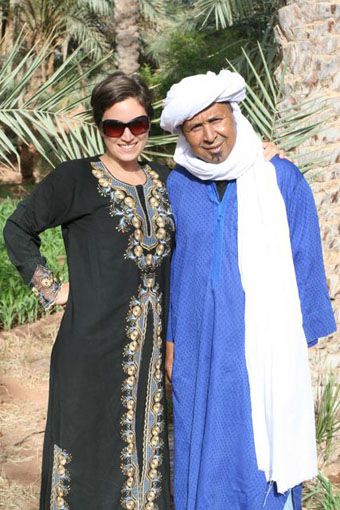
Here I am with our guide, Hamdi
The story starts back in March when I started looking into desert wells. Essential to life in the desert, wells are found in every desert known to man, but one passionate Italian geologist whispered down the phone, ‘I can tell you the best place of all.’ As the UNESCO consultant on desert areas, he had seen more sand dunes than I could imagine, so I was keen to hear his words of wisdom. ‘Algeria’ he said. Hmm.. not somewhere I had ever wanted to go, but who knows.. I might be surprised.
So a few weeks later I was on a plane to Algeria, and then flying from the capital, Algiers, to a small town called Timmimoun. From the window of the nearly empty plane, all I could see was desert- golden dunes, then stretches of flat hard baked desert rock, big escarpments and dried out river beds snaking through the emptiness. We flew for three golden hours and still the desert stretched on. I hardly saw a soul down there, a few small towns in the middle of nowhere, but that was it. How on earth do people live here? And why?
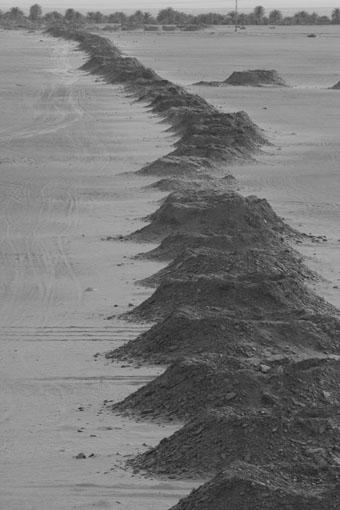
This was my recce, my first visit to Algeria and this extraordinary part of the Sahara. From the moment I stepped into the heat and saw the dunes I was in love. It was magical. And when I saw the desert wells, I was astounded. I had never seen anything like this. There was not just one well or two here in the desert, but hundreds and thousands. Individually they looked like huge mole hills, but in a long line this lunar landscape looked as if it had been blasted by a bomber plane. Amazingly, some of these wells were 600 years old and the system they are based on dates back to 5000 years ago. Incredibly, even today these wells and passages are still the only source of water for some people here.
I took photos, recced other locations, met people who dig these wells, and others who farmed small gardens in the desert. I wrote shot lists and planned how to reveal this incredible landscape and tell this story. A week later I was back in the office and writing applications to Algerian officials to get permission to film and import a hot air balloon for aerials. That was back in May. Between then and my Algeria shoot I was filming in Kenya but Algeria was always on my mind.

But as the shoot got nearer, I was beginning to tear my hair out. My Production Co-ordinator (the lovely Isabelle Corr) and I had written more letters and filled in more paperwork than I care to recall. I was hoping that Algeria would welcome a filming project revealing its extraordinary natural heritage, but there were so many hurdles to cross, I wasn’t sure I wanted to go back!
At the end of August we finally received our filming visas, and then the unimaginable happened. The wonderful sound recordist I was hoping to go to Algeria with, died in a tragic accident. I could not believe it. He was so full of life and energy. Filming out there would not be the same without him. And then a week later, the safety climber we were supposed to be taking also had a serious but not fatal accident; falling from a cliff while climbing. With only three weeks to go until the shoot, we had to find new crew and get them visas in quick turn around time.
Then there was another blow. Sadly, one very important bit of our kit was refused. We were not allowed to bring in the hot air balloon. I had hoped to film aerials over the Algerian desert, giving a spectacular bird’s eye view of these strange and ancient wells, and the beautiful villages and gardens but, despite providing every insurance document and licence, the authorities said No. Dany, the hot air balloon pilot, who shot beautiful aerials of the Niger desert for us last year, was as disappointed as we were but so as not to risk the rest of the shoot, we had to cancel that aspect of the filming project.
It is now November and I am back from Algeria. After the rollercoaster summer preparing for the filming trip, I can say with huge relief that we did finally get ourselves and our kit into the desert. Under the 45 degree heat of the Sahara, the team managed to build a climbing rig over the wells to lower our cameraman 15 metres into the desert rock, where it was cool, dark and quiet. Our great cameraman (also an expert caver) Gavin Newman managed to squeeze through the tiny manmade passages to film Mafourdi, a sweet 70 year old man, nimble as a 17 year old, as he descended to meet him in the darkness.
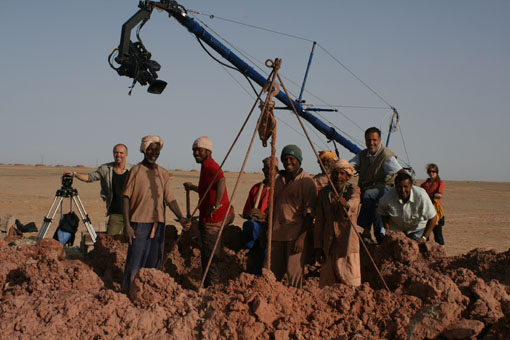
From the surface I stared nervously into the dark hole. I could hear tapping and rocks falling as more rock was drawn up in buckets. Communicating by walkie talkies, I blindly suggested shots to the cameraman, as it was too tight for me to go down inside the wells too. As I tried to focus on getting the shots to tell the story, I tried not to think of tales I’d been told about passages collapsing, trapping workers inside in dark desert graves. Luckily this was not our fate. You’ll have to watch the Deserts film to see the whole fascinating story but for now, all I can say is that thankfully this rollercoaster ride ended well, and give a huge thanks to the team - Isabelle, Gavin, Willow, Sam, Said and the Ba’amar guys - for all their hard work!
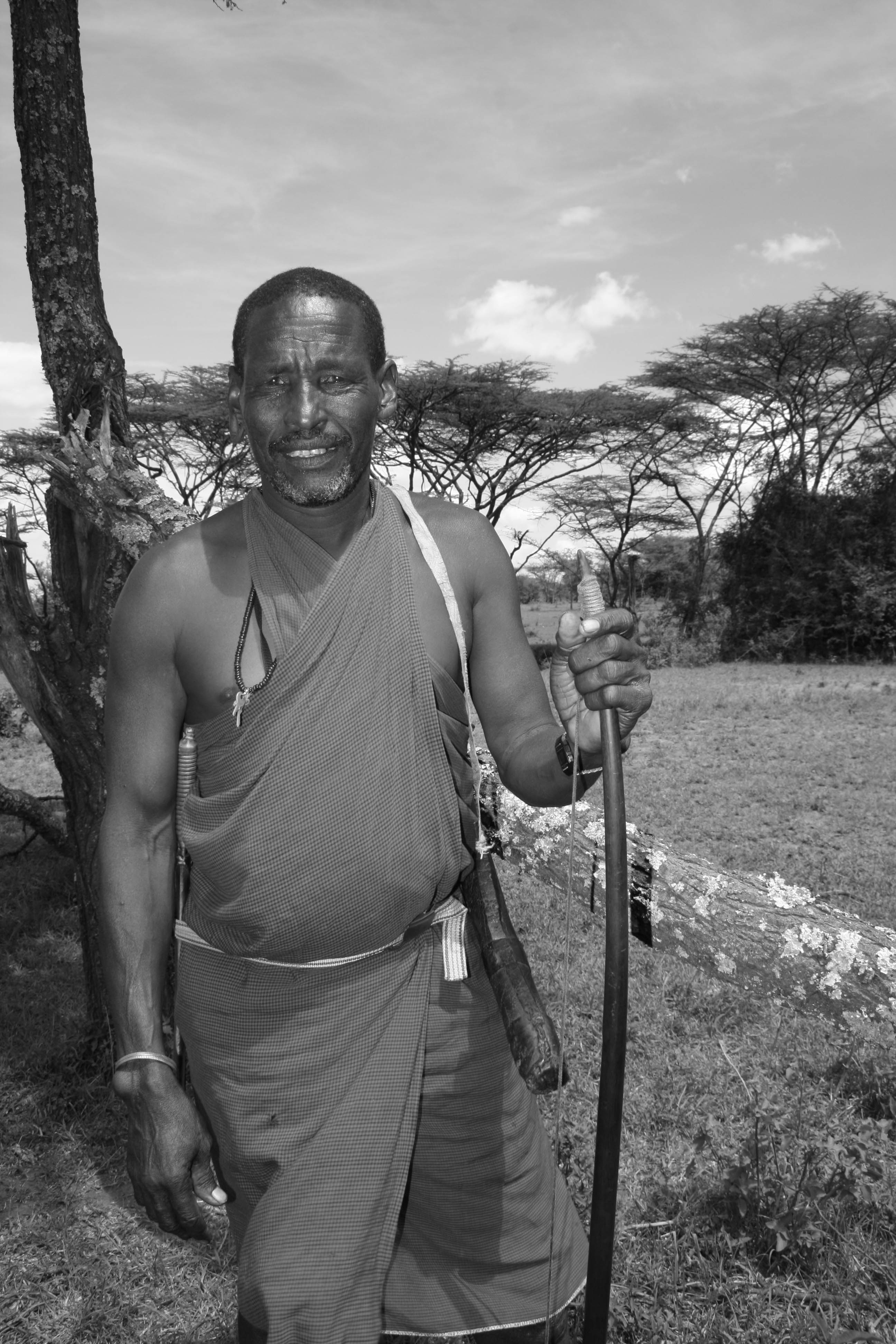

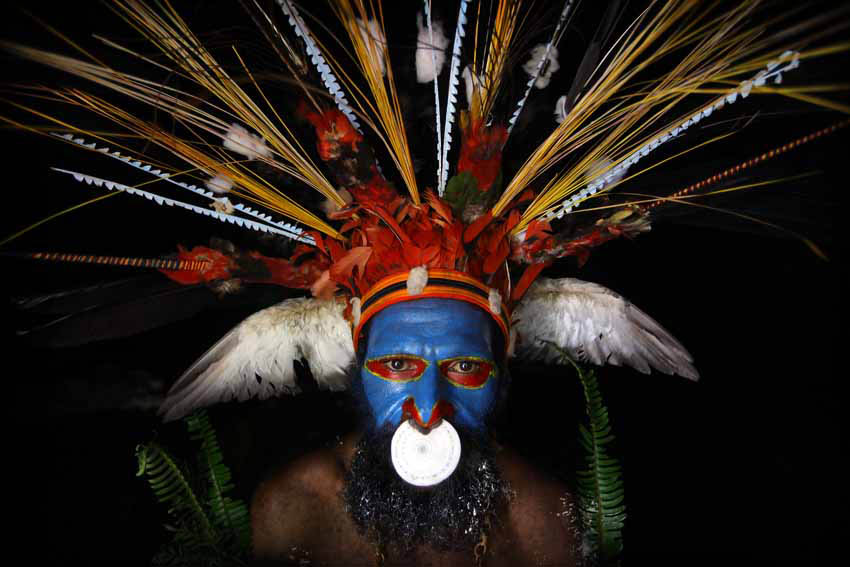




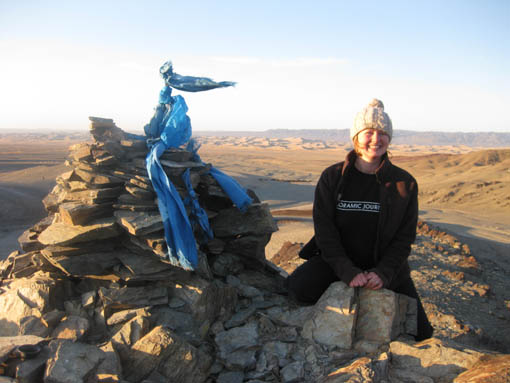
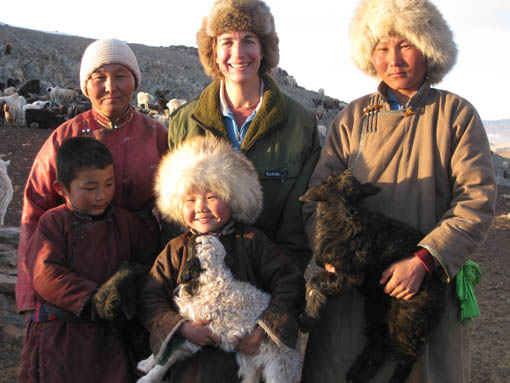
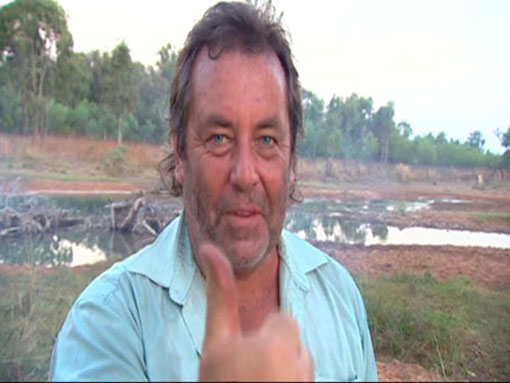
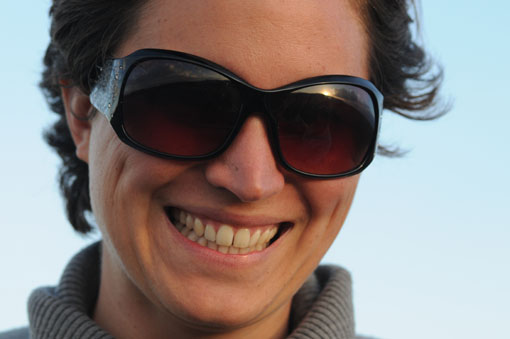
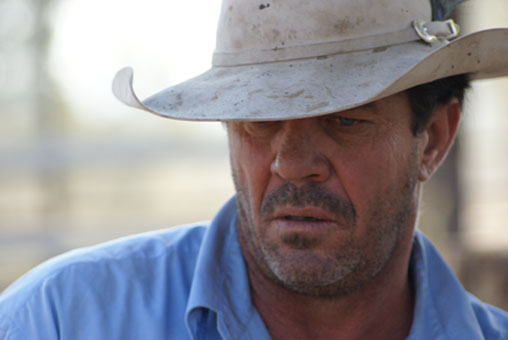
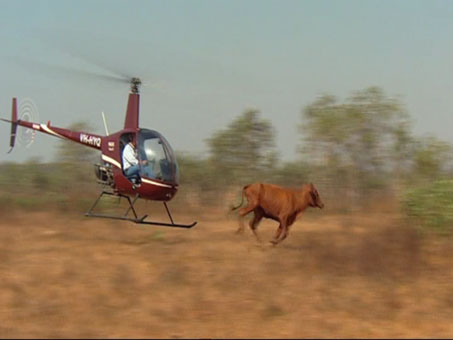
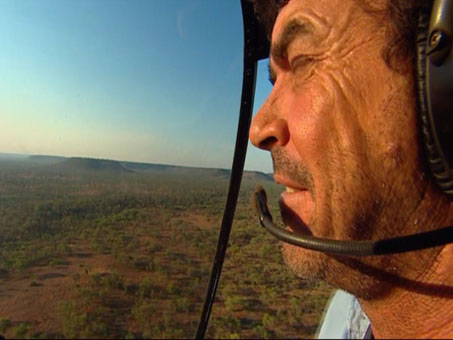
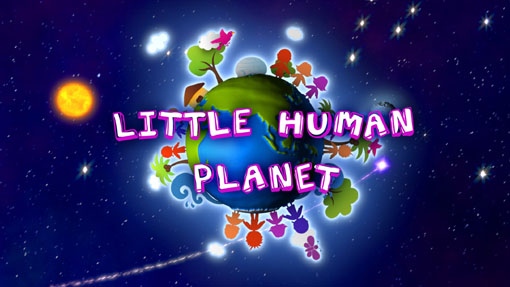
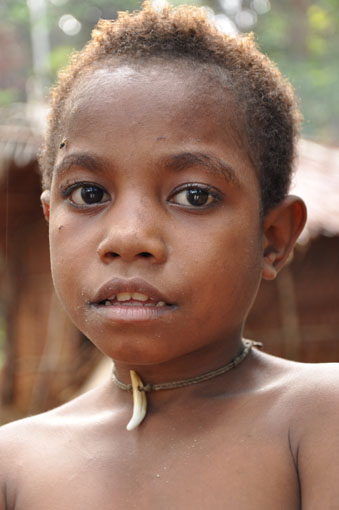
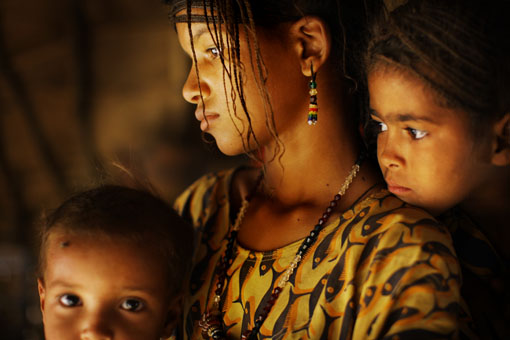
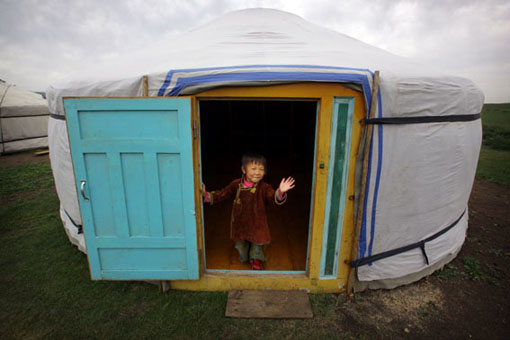
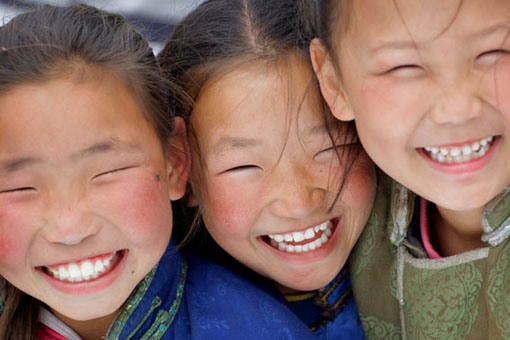
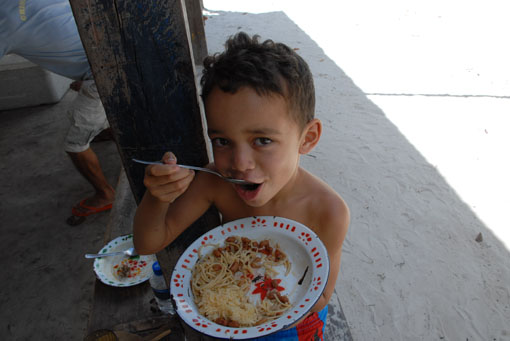
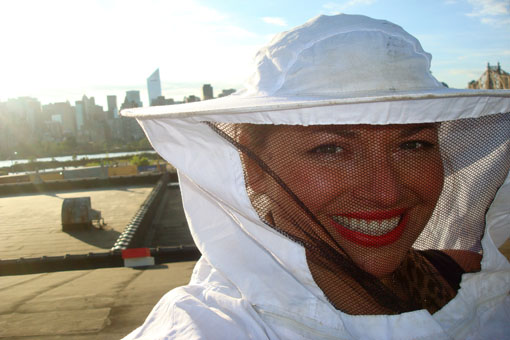
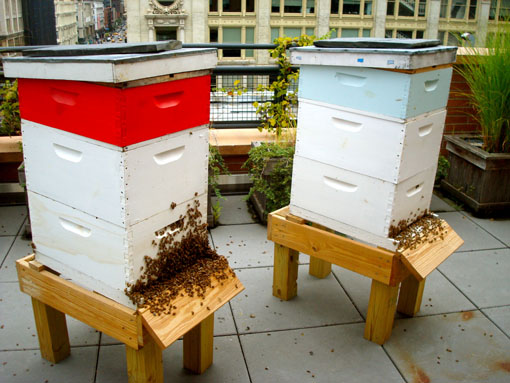
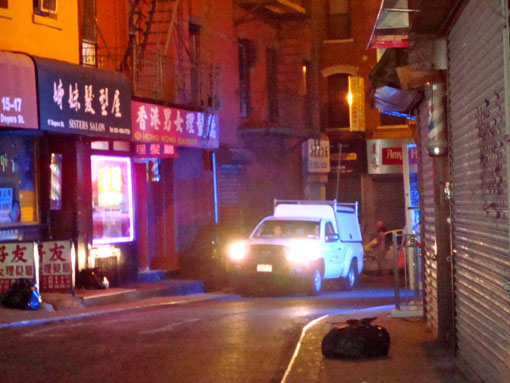
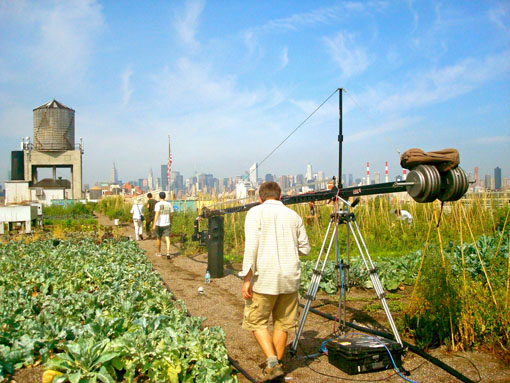
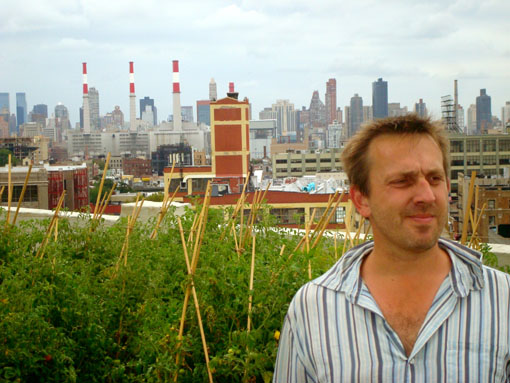
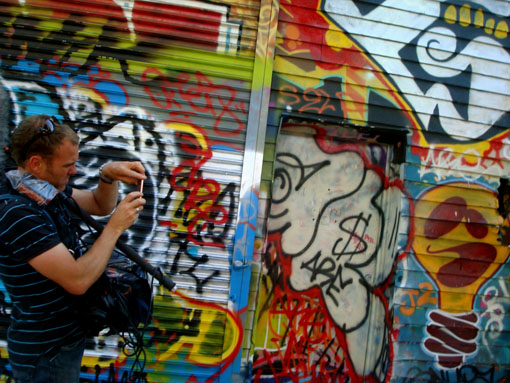
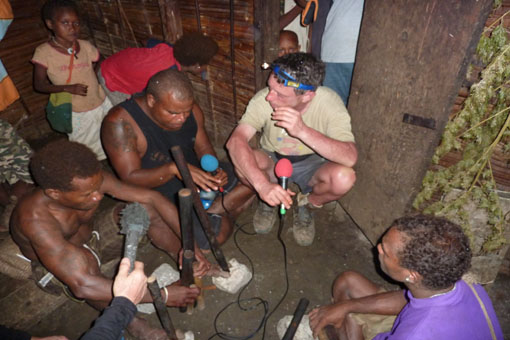
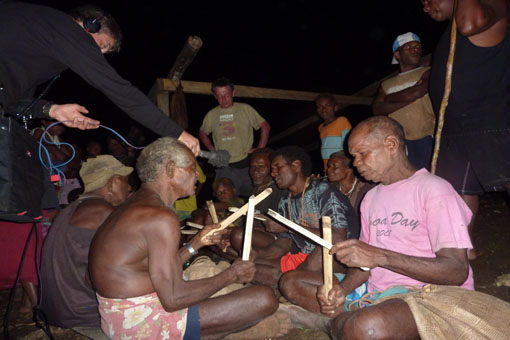
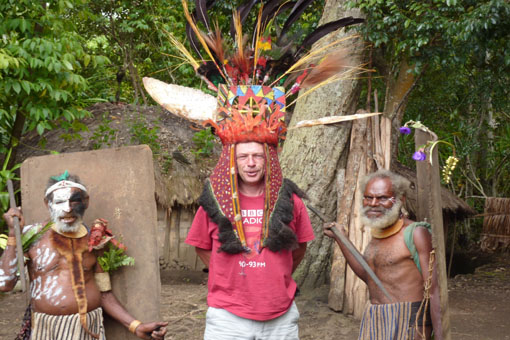
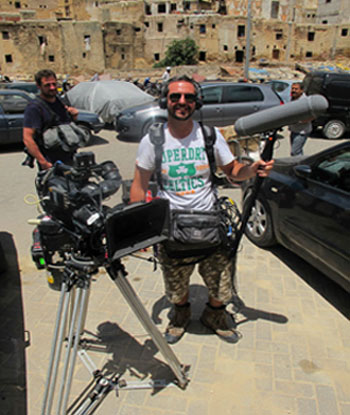
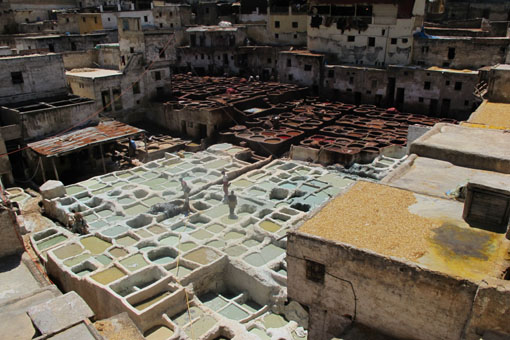
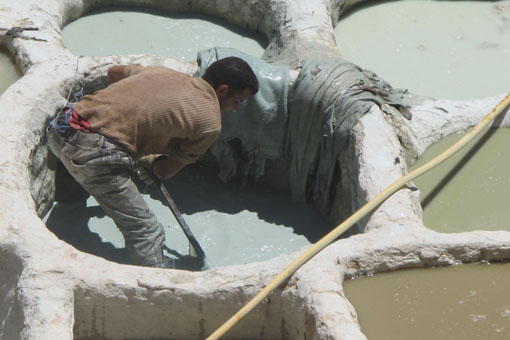
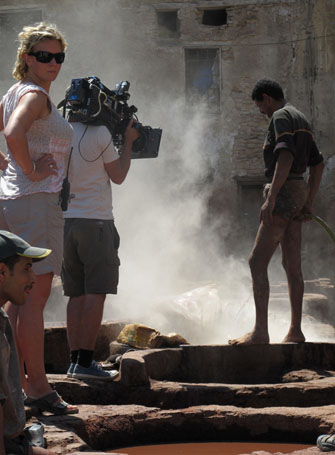
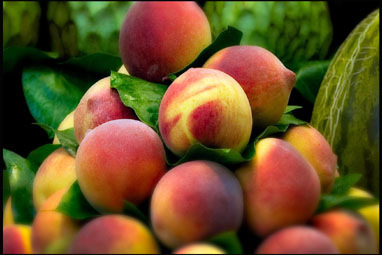
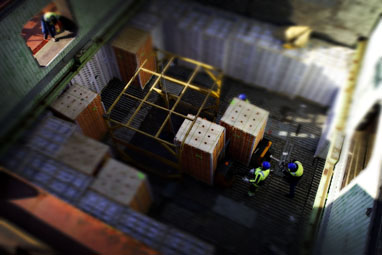
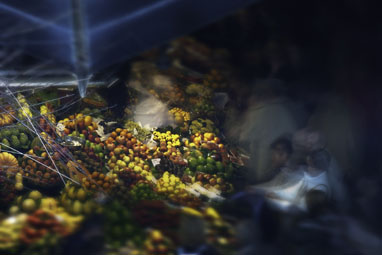
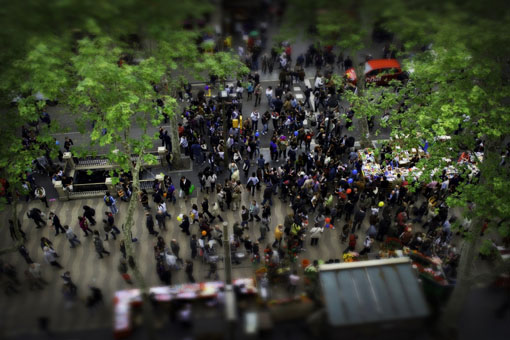
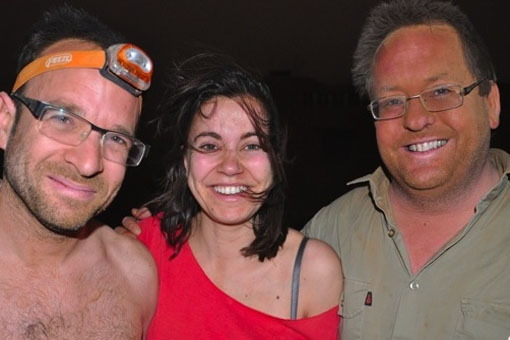
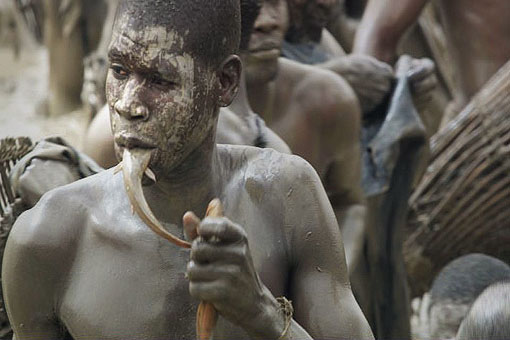
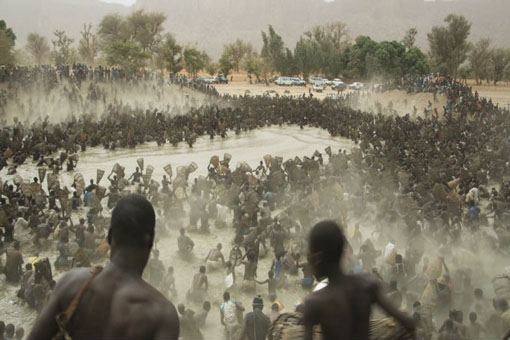
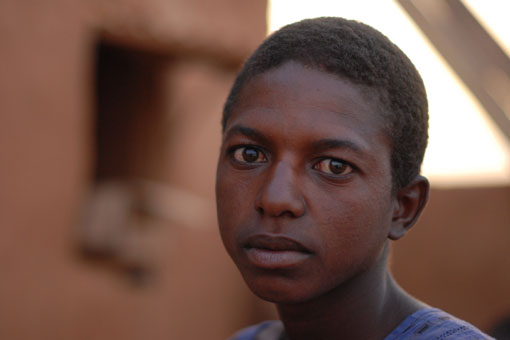
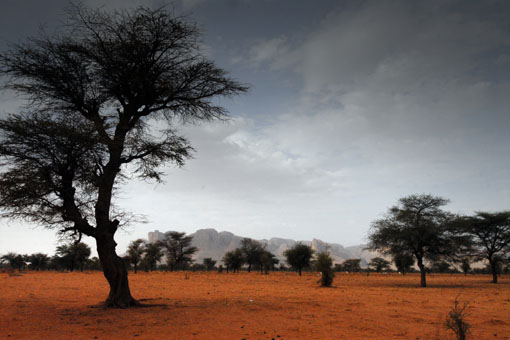
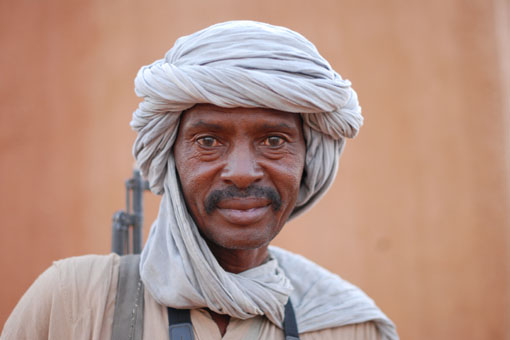
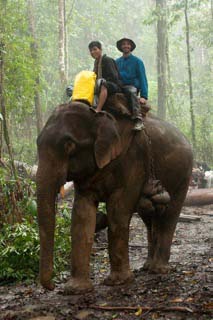
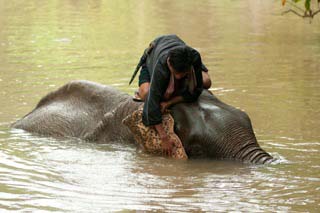
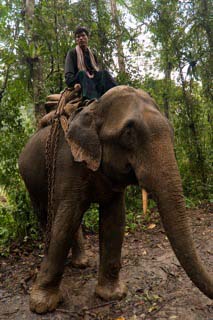
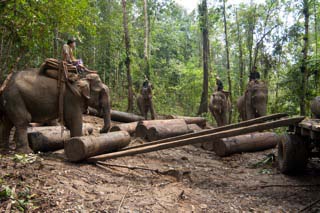
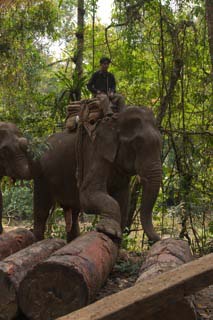
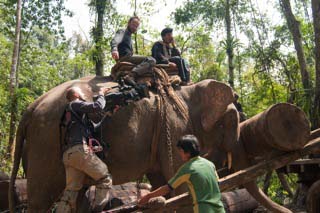
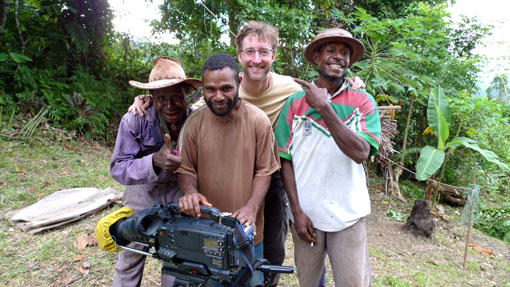
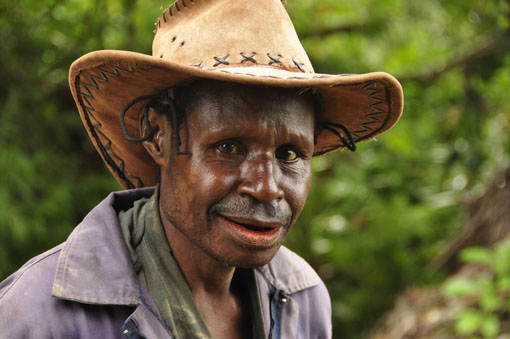
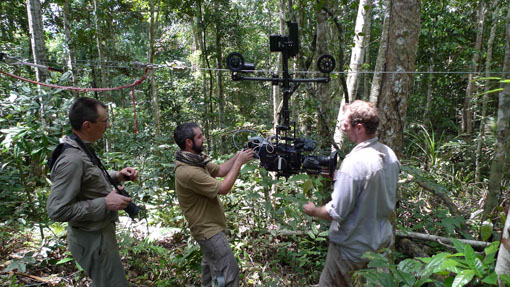
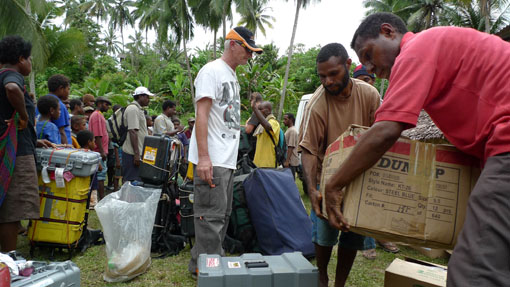
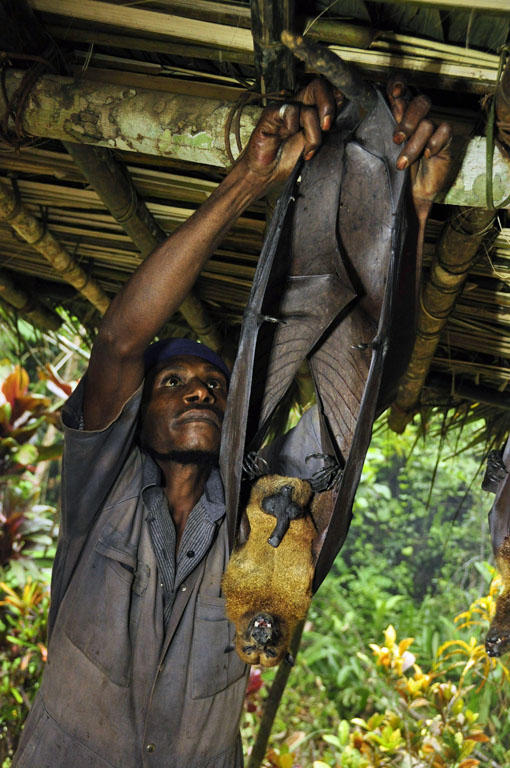
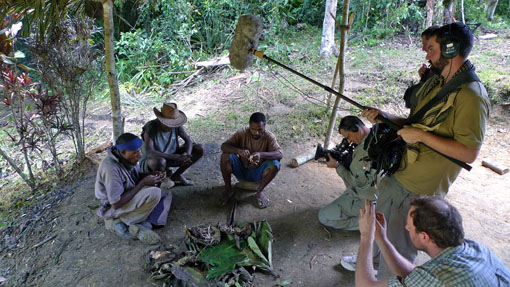
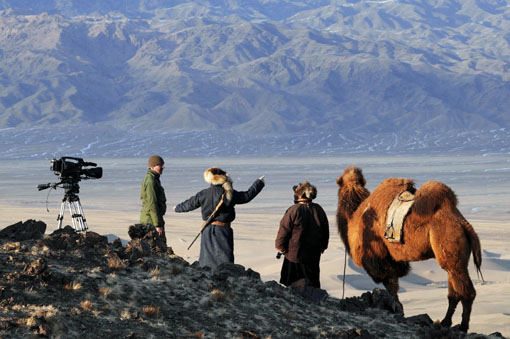
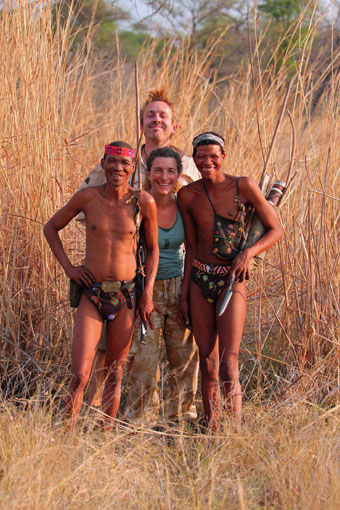
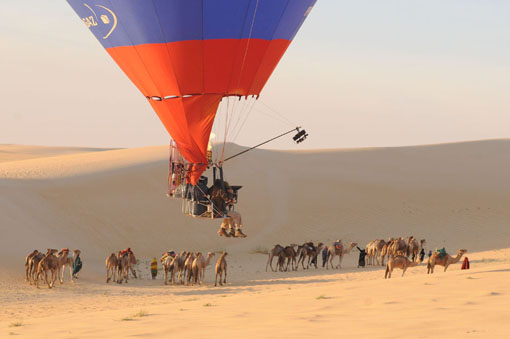
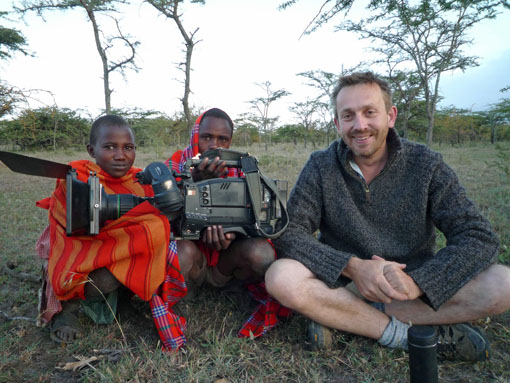
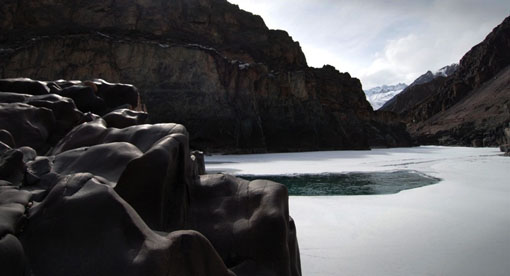
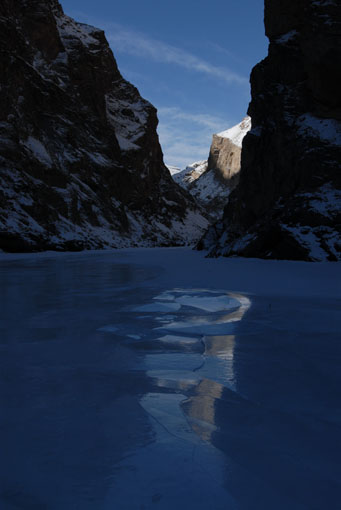
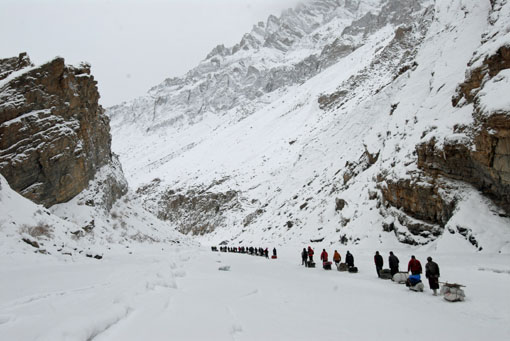
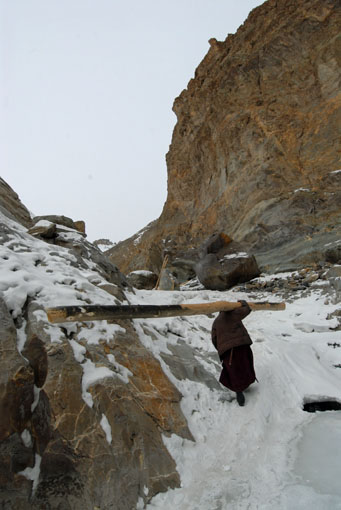
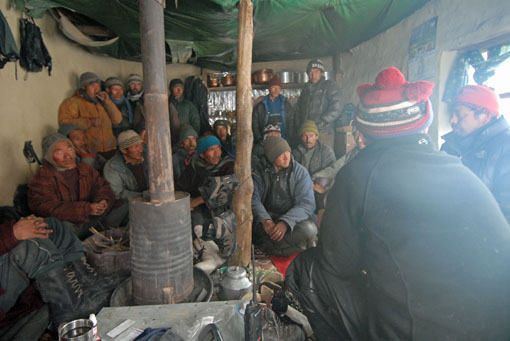
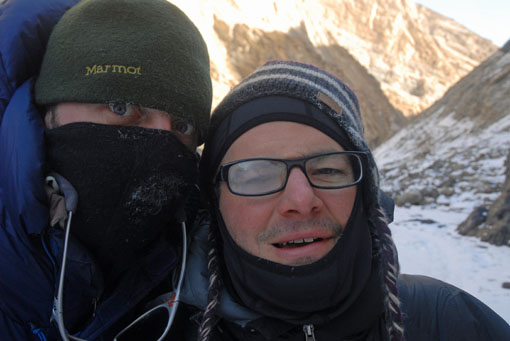
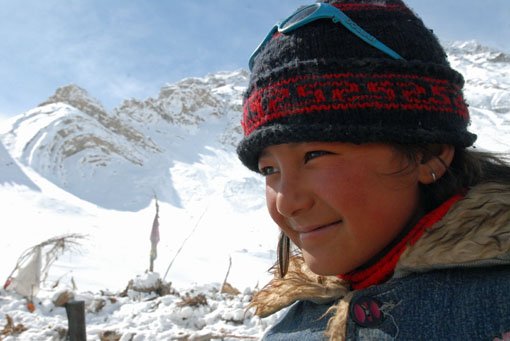
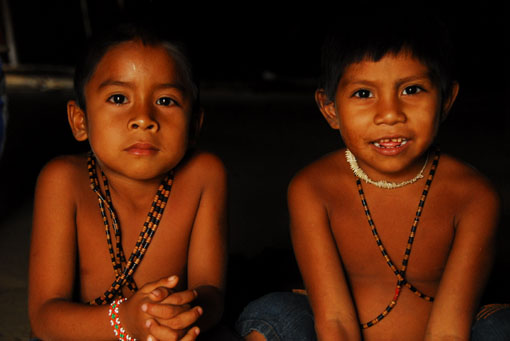
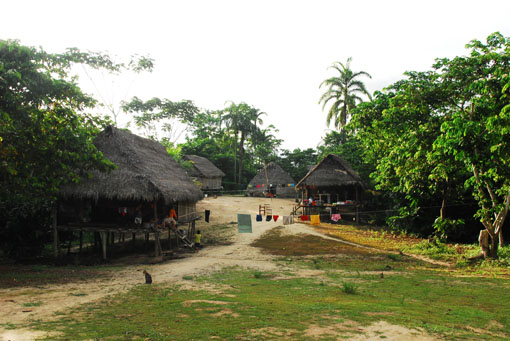
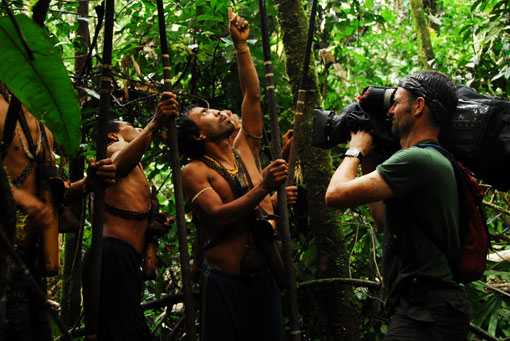
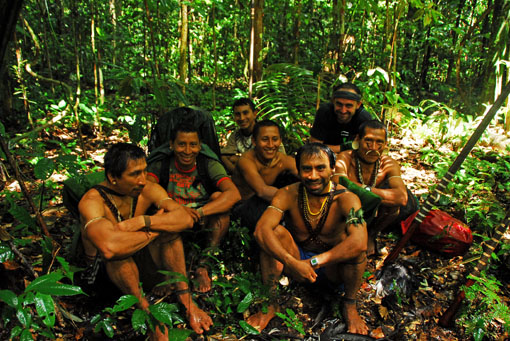
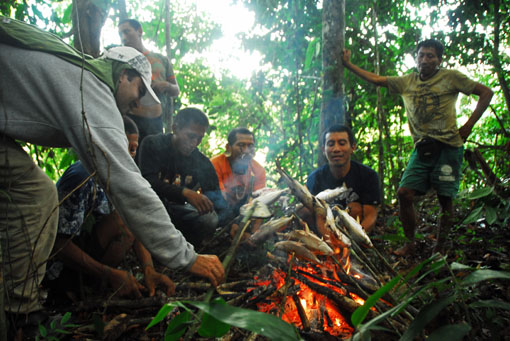
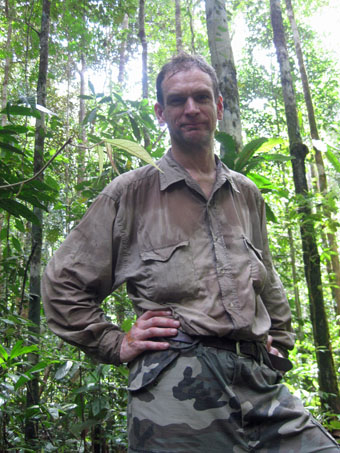
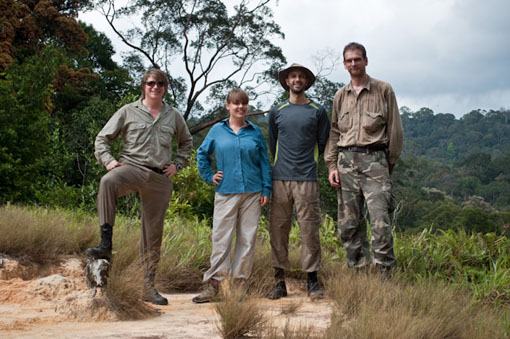
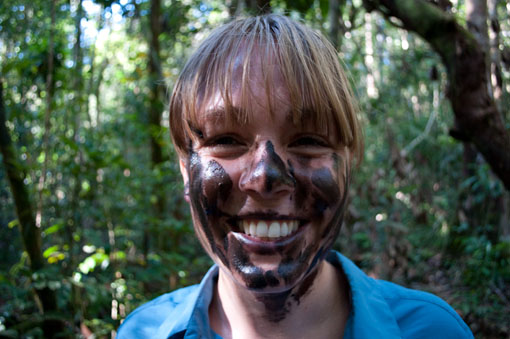
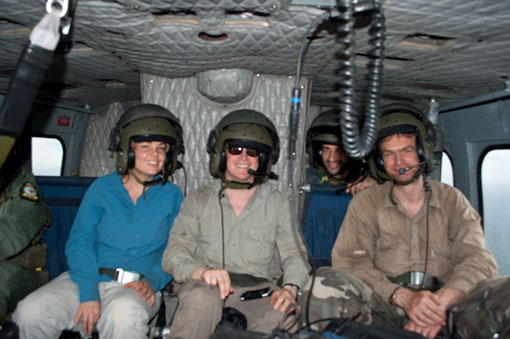
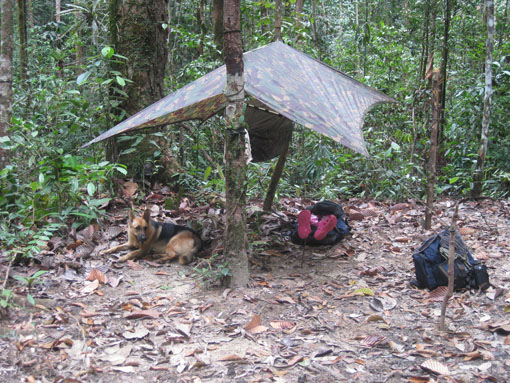
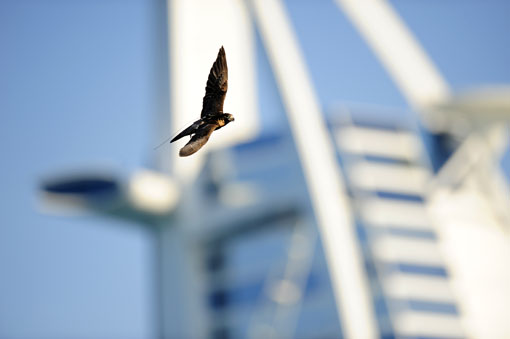
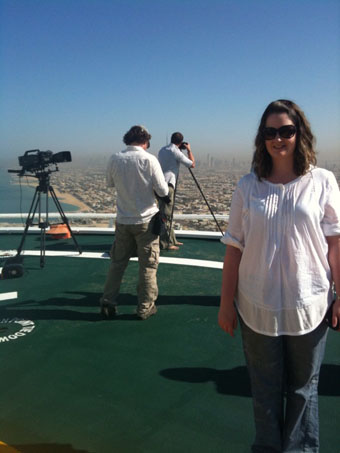
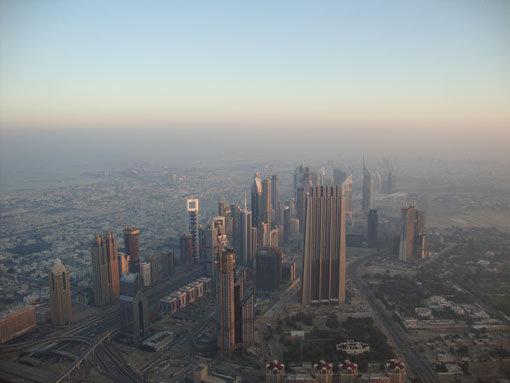

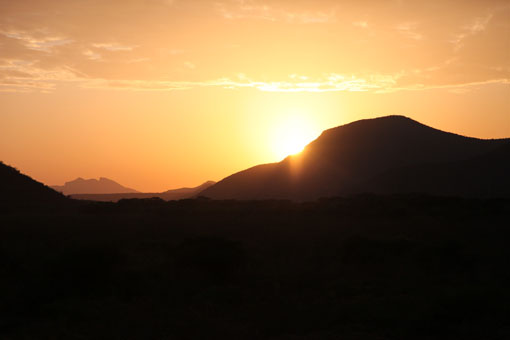
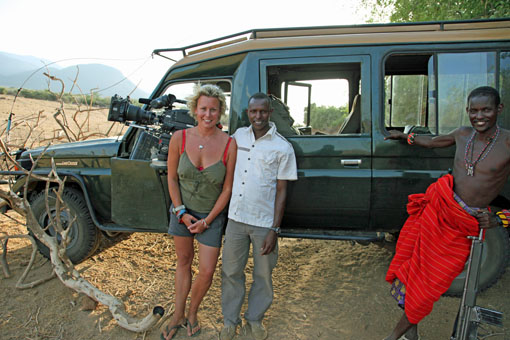
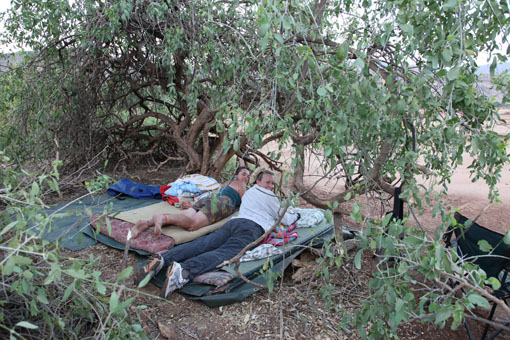
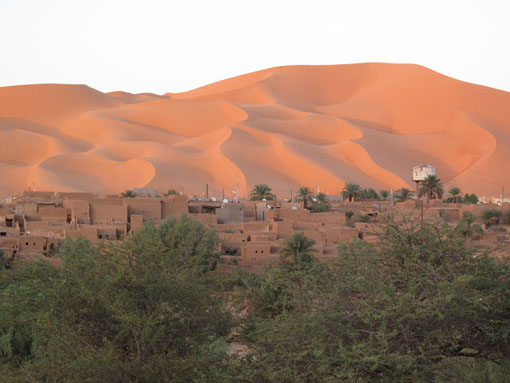
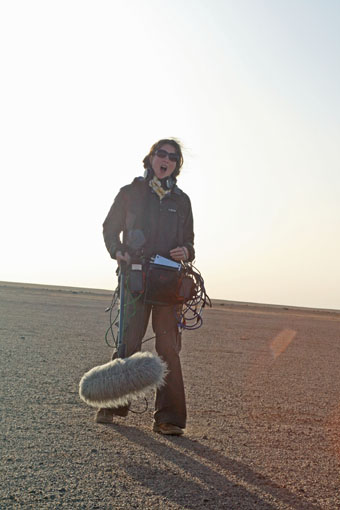
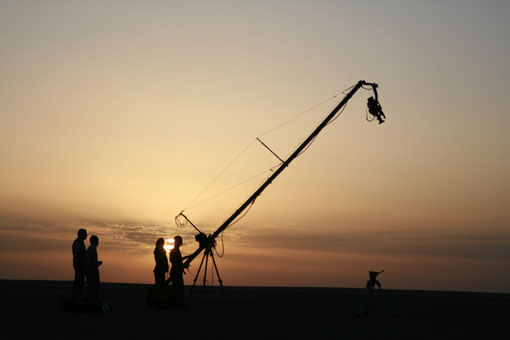

Mr. Hurt, I Presume?
by Dale Templar, Series Producer
John Hurt
When you’ve worked in television for over 20 years you get quite used to meeting and working with famous people. There are very few encounters that have ever really fazed me. One exception was meeting George Michael in a studio at the height of his solo career in the early 90s and, more recently, literally bumping into David Beckham behind the scenes at the O2 in London, with a beefburger in my mouth.
Well, a few weeks ago I was in another recording studio in Hampstead, North London waiting to meet one of our most truly talented British actors. I spotted him as he came through the door of the studio canteen and, as I walked towards him, a vast array of movies and characters flashed before me. Here was “The Elephant Man”, ” The Naked Civil Servant”, Harry Potter’s eccentric wandmaker and finally that stomach bursting scene from “Alien” leapt into my mind! Yes, it can now be officially confirmed that John Hurt is the voice of “Human Planet”. And what a voice! As soon as he shook my hand and said a simple “Hello, nice to meet you”, I just couldn’t wait to start our voice record session.
We spend months in edit cutting the pictures, crafting the films visually but we listen to the programmes with what we call scratch voices on them. At this stage, the script is usually recorded by the episode producer or, sometimes, the picture editor. They always do a great job but when the script is finally locked and we finally get to put on “the voice of the series”, a instant transformation occurs. The narrator gives it a unique identity. John’s resonant, commanding yet warm voice wraps itself around the pictures and draws you into the action and the characters. As I expected John was a consummate professional and we all worked incredibly hard, recording the voice-over for both the Arctic and Oceans episode. This is not an exact science but every line, every word is scrutinized. John had six sets of professional ears, including his own (which was usually the most critical), making sure everything was perfect.
What I loved was John’s dry sense of humour. In the Arctic script we do a scene which is effectively written as a pastiche of a television cookery show, of which we have many in the UK. Here was John Hurt doing his own wonderful interpretation of Delia Smith, or one of that ilk, reading out a recipe for how to prepare Kiviak, a Greenland delicacy, made from unplucked Arctic birds and a sealskin. A classic moment I will never forget.
Aug 20, 2010 | Categories: On Location | Tags: arctic, BBC; Human Planet;, commentary, Dale Templar, Greenland, John Hurt, Kiviak, narrator, oceans | Comments Off